On 25th March, 2021, “Art in Kung Fu: Honoring the Twentieth Anniversary of the Foundation Program at the School of Fine Art, CAFA” was unveiled at CAFA Art Museum. This exhibition focuses on the six sections of De (Virtue), Su (Sketching), Cai (Color), Xing (Fieldwork), Yan (Extension) and Pu (History), revealing the historical structure of the Foundation Program since its establishment in 2002. It showcases over 100 collections of the Foundation Program over more than 2 decades as well as excellent collections by CAFA and representative works by tutors in the development of the Foundation Program. It is regarded as a more comprehensive retrospective show that features achievements made by the Foundation Program at the School of Fine Art, CAFA for the public.
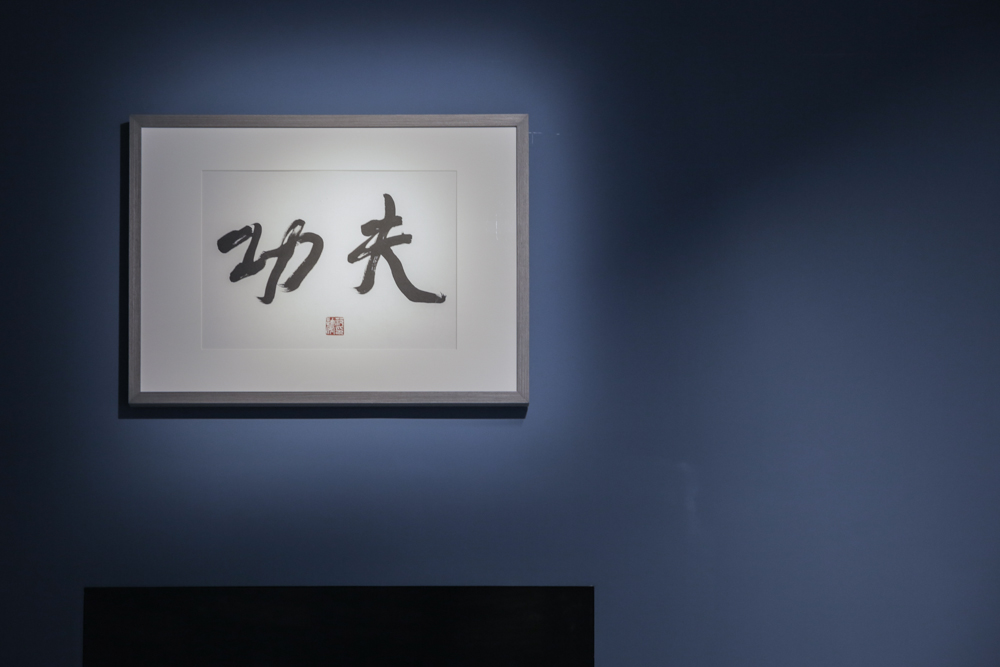
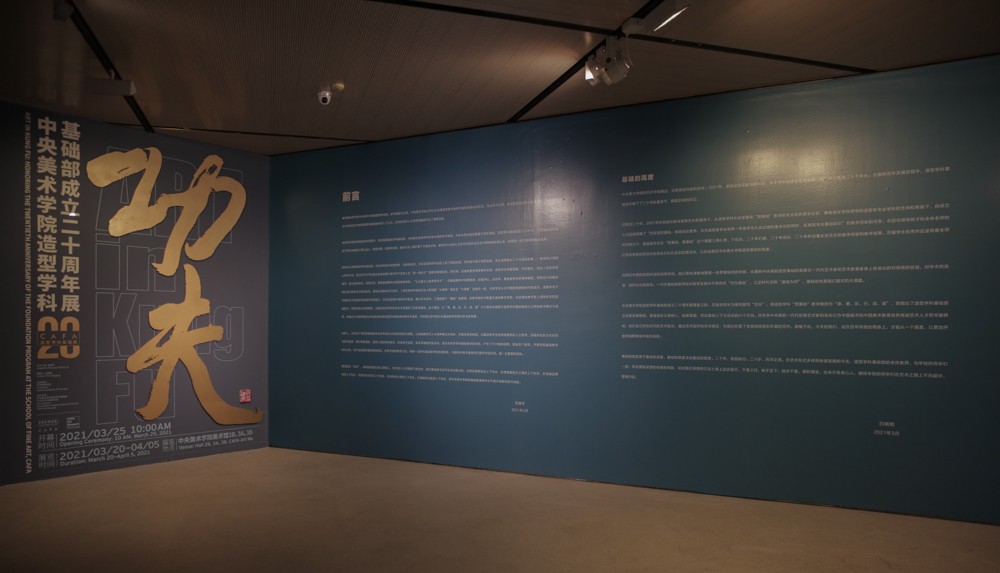
Exhibition View of “Art in Kung Fu: Honoring the Twentieth Anniversary of the Foundation Program at the School of Fine Art, CAFA”
Upon celebrating the twentieth anniversary of the founding of Foundation Program at the School of Fine Art, the opening ceremony for the exhibition was held in the Lecture Hall of CAFA Art Museum. Professor Jin Shangyi who is former President of CAFA together with senior professors and leaders of CAFA including Zhong Han, Du Jian, Sun Weimin, Zhang Lichen, Pan Shixun, Cao Chunsheng, Sun Jiabo, Wen Guozhang, Sun Jingbo, Huang Huaying, Wang Shaojun and Wang Zhong who is former Editor-in-chief of Fine Arts Magazine attended the ceremony. Gao Hong, Party Secretary of CAFA, Fan Di’an, Chairman of China Artists Association and President of CAFA, all members of the CAFA leadership, Bai Xiaogang, Curator for this exhibition and Director of School of Fine Art jointly participated in the ceremony along with faculty members from the School of Fine Art and representatives of teachers and students from CAFA.
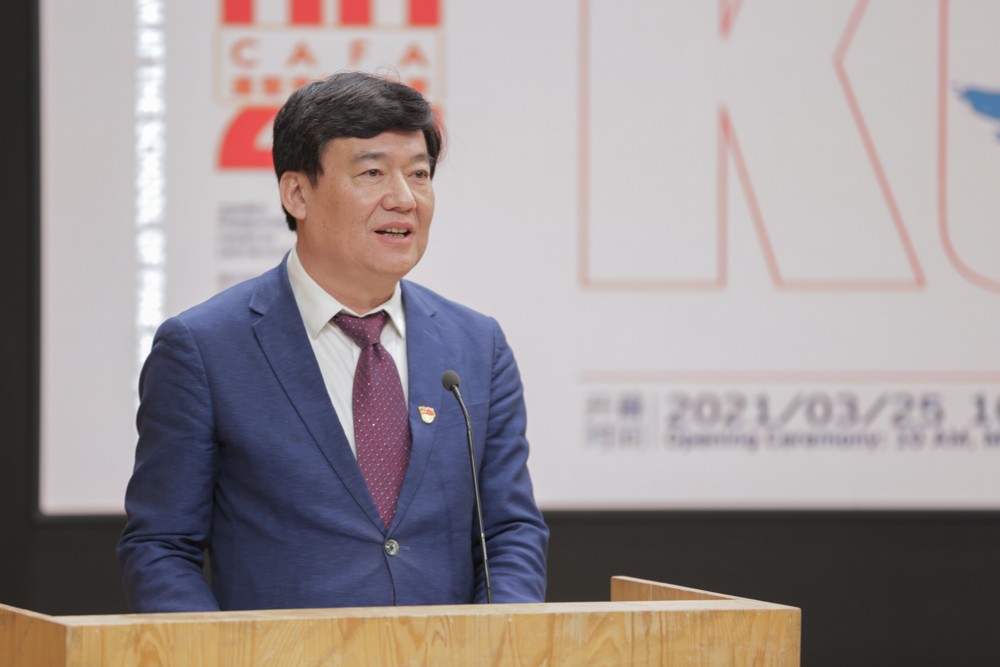
Gao Hong, Party Secretary of CAFA announced the official opening of the exhibition.
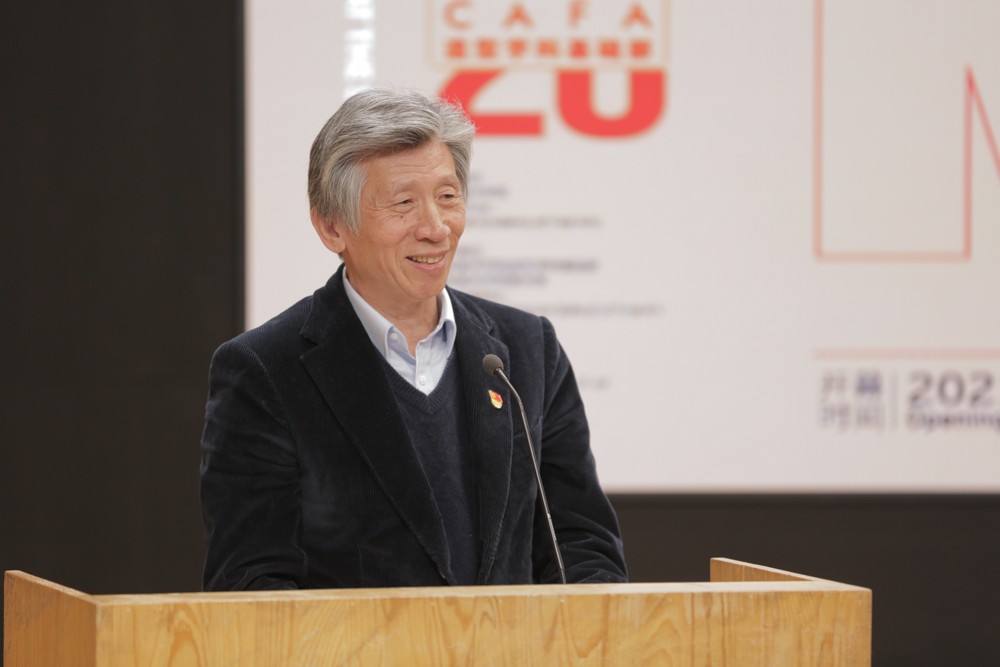 Fan Di’an, Chairman of China Artists Association and President of CAFA
Fan Di’an, Chairman of China Artists Association and President of CAFA
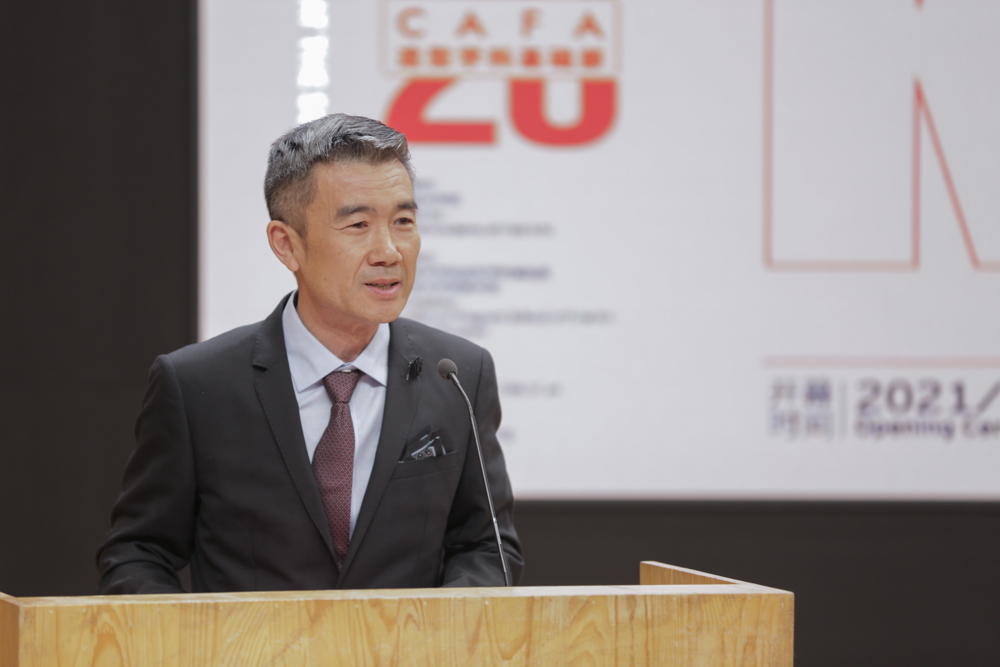 Zhang Lujiang, former Dean of the Foundation Program and Dean of Department of Oil Painting addressed to the opening ceremony.
Zhang Lujiang, former Dean of the Foundation Program and Dean of Department of Oil Painting addressed to the opening ceremony.
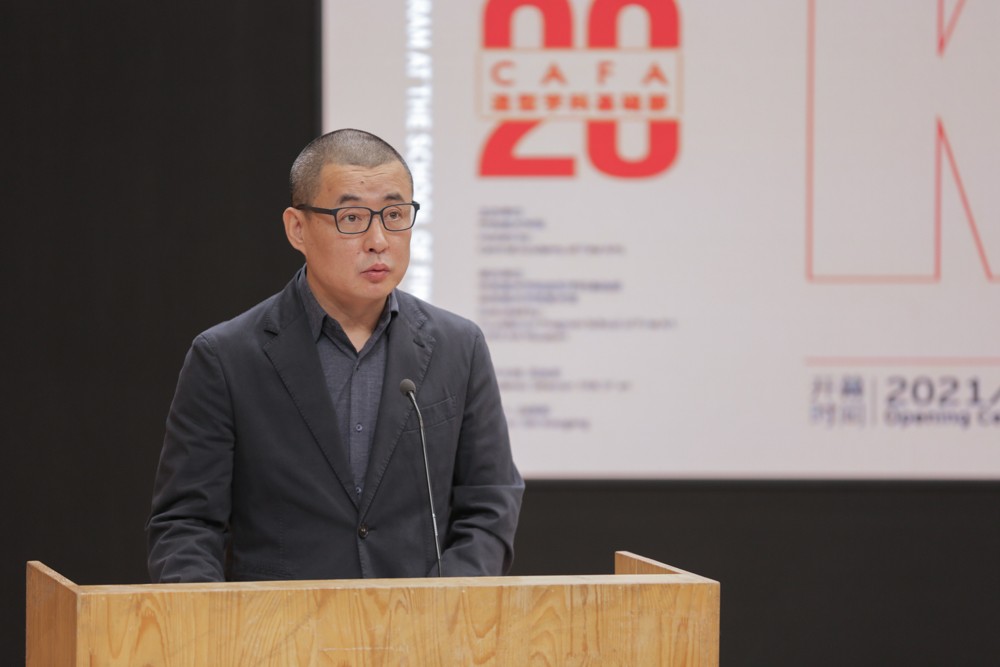
Bai Xiaogang, Dean of Foundation Program of School of Fine Art and Curator for the Exhibition
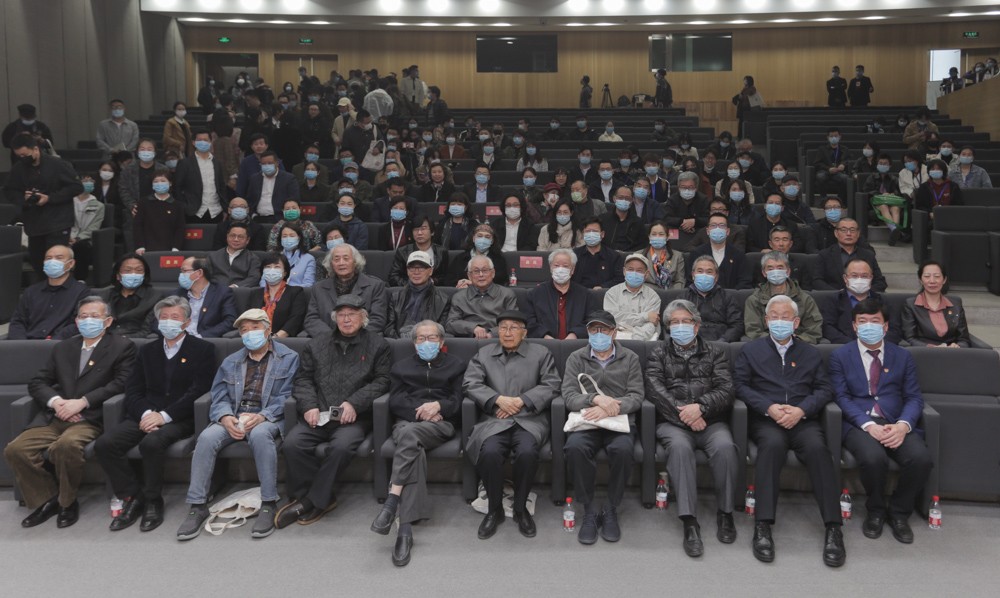
The Group Photo of Honored Guests
From “Foundation Program of Oil Painting” to “Foundation Program at the School of Fine Art”, Tracing the Source of “Art in Kung Fu”
The original intention of “Foundation Program at the School of Fine Art” can be traced back to the developing period when it changed from the “Foundation Program of Oil Painting” to “Foundation Program at the School of Fine Art”. As early as the “Second Factory” period in 1996 (in 1995, Central Academy of Fine Arts moved from Xiaowei Hutong at Wangfujing to the temporary campus of the Second Radio Factory on Wanhong West Street of Jiuxianqiao, Chaoyang District, which was referred to as the “Second Factory Period”), Professor Zhu Naizheng suggested the establishment of the “Foundation Program of Oil Painting”.
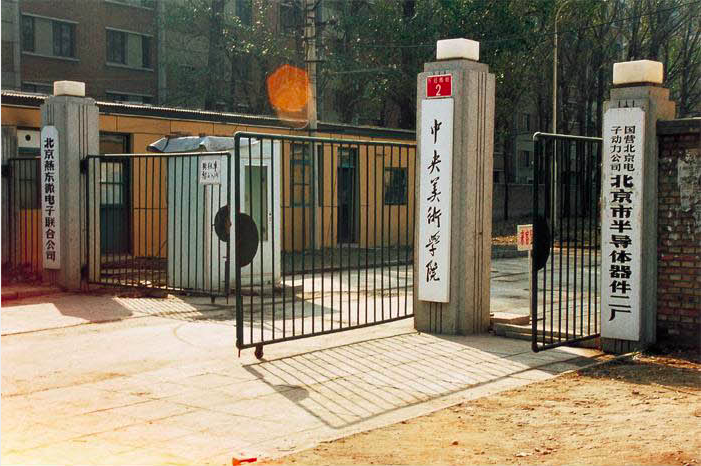
The Gate of CAFA during the “Second Factory Period”
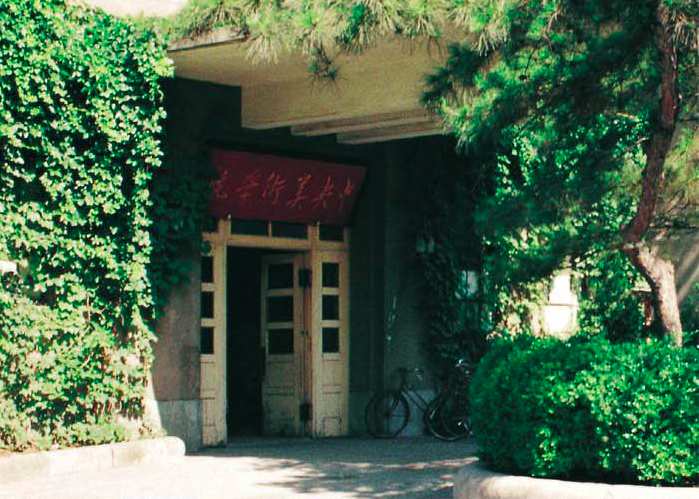
Teaching Building of CAFA at Xiaowei Hutong
In the “Original Reasons that the Foundation Program at the Department of Oil Painting was Founded” (Revised), “...At the beginning of the reform and opening up, the Department of Oil Painting at CAFA resumed its studio system which brought new vitality to art education... However, judging from the teaching conditions in recent years, since freshmen entered the studio directly after enrollment, they prematurely relied on their individuality, and in fact they still lacked the overall quality that they must master in common. At the end of four years or after graduation, it is often difficult to meet the requirements for a truly qualified artistic talent because they did not have a good comprehensive foundation. It also reflected the importance of fundamental teaching norms and the necessity of basic preparation before entering each studio...” [1]
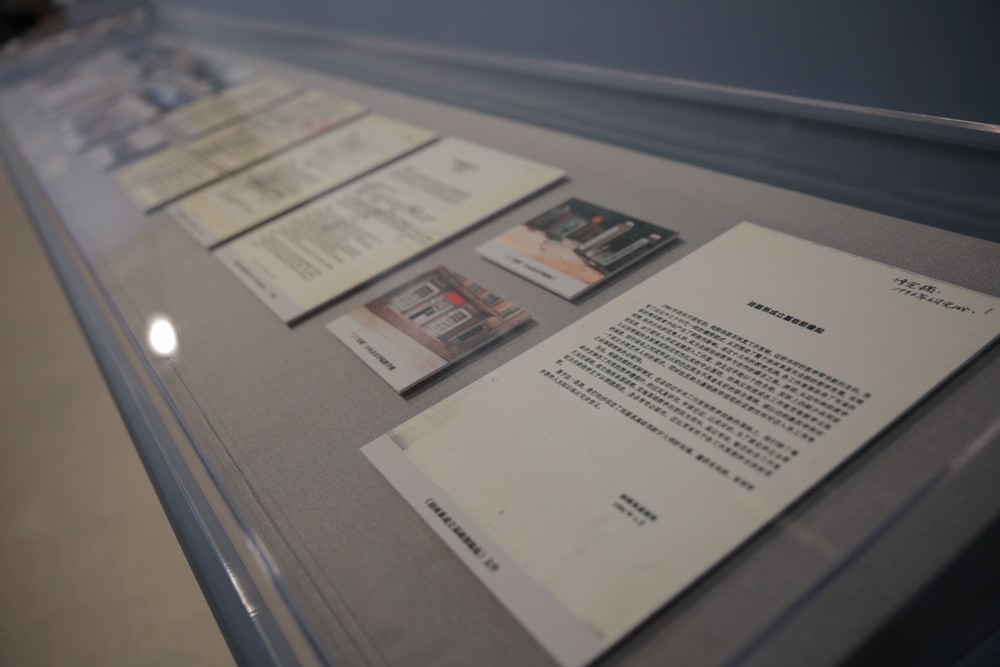
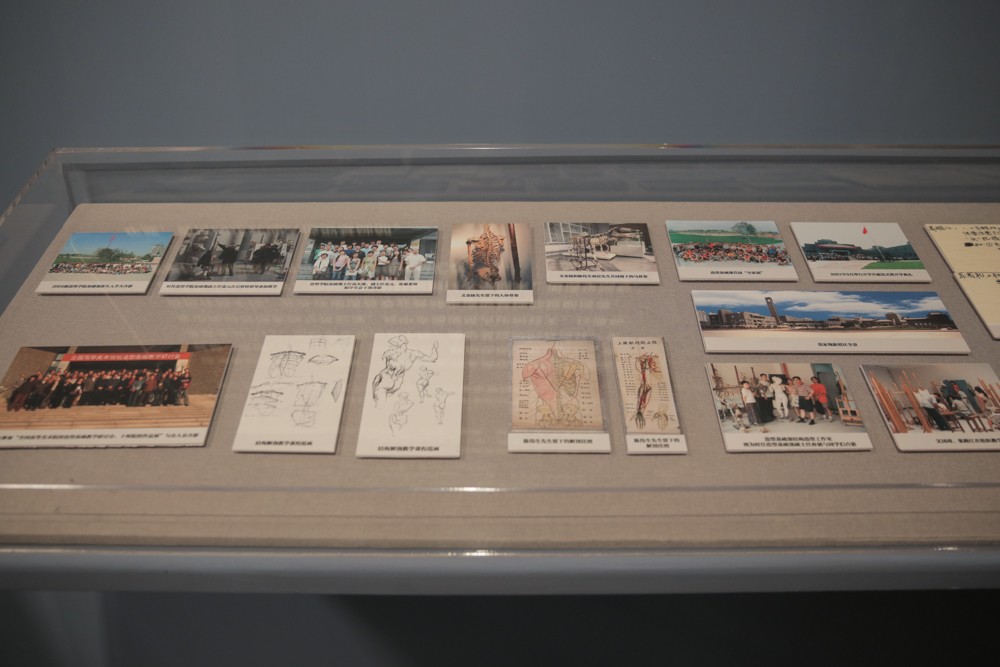
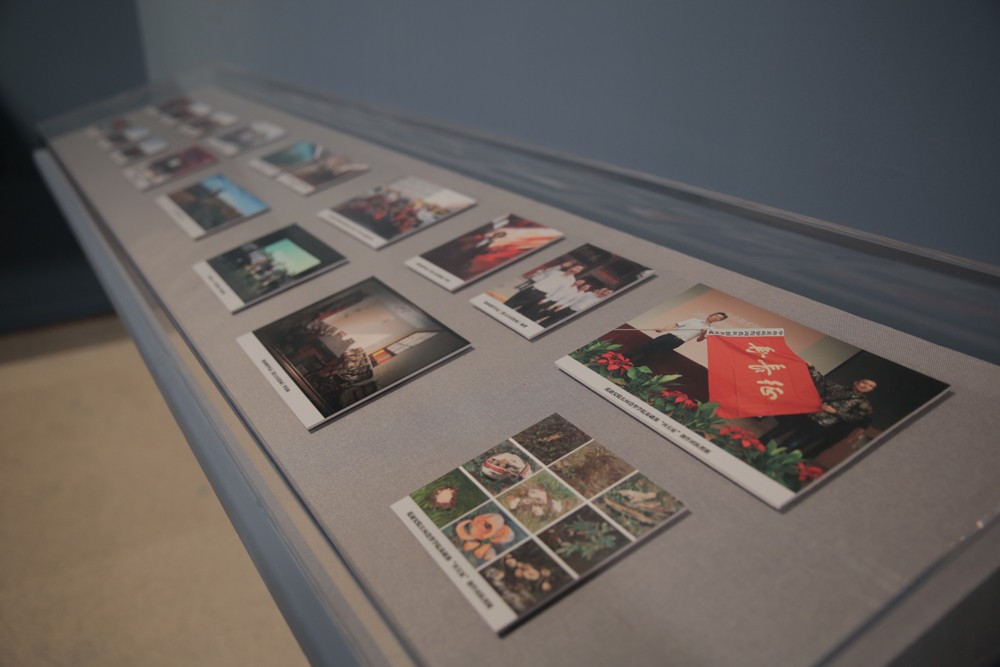
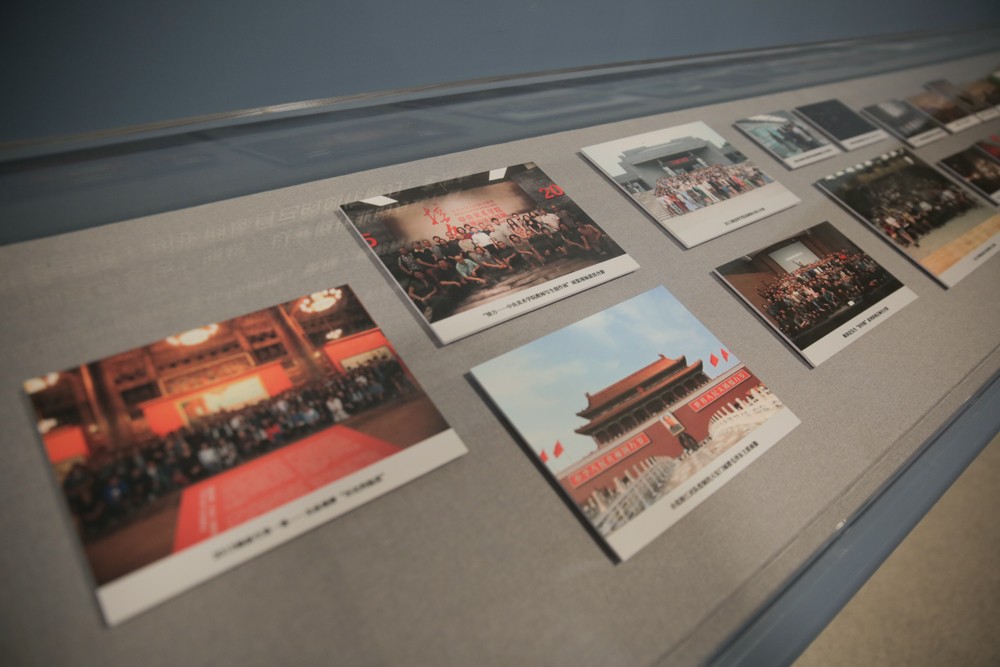
The section of “History” sorts out the developing history of the Foundation Program at the School of Fine Art, CAFA.
The Foundation Program at the Department of Oil Painting was established after repeated discussions and a formulation of the syllabus, and the orientation of training students with both a “solid foundation” and “comprehensive quality” was finally determined. [2] The enrollment scale was basically the same as the previous one, 10-20 students were enrolled in each session and the two-year period of study in the Foundation Program was determined with three core courses of Drawing, Color and Spring Sketch in the Foundation Program at the School of Fine Art.
In 2001, Professor Jin Shangyi together with the leadership team and academic committee of CAFA decided to establish the Foundation Program at the School of Fine Art in CAFA, which was related to the continuous promotion of the tutorial system and in-depth development of a studio system within CAFA. [3] After preparations over six months, the Foundation Program at the School of Fine Art was officially established. As the first unified teaching program for fine art within all the art colleges in China, it has stipulated that each undergraduate admitted to the School of Fine Art should study at the Foundation Program for one year. After they fulfill the requirements, they can choose to continue their studies in the Departments of Chinese Painting, Oil Painting, Printmaking, Sculpture, and Mural Painting through the principle of mutual selection.
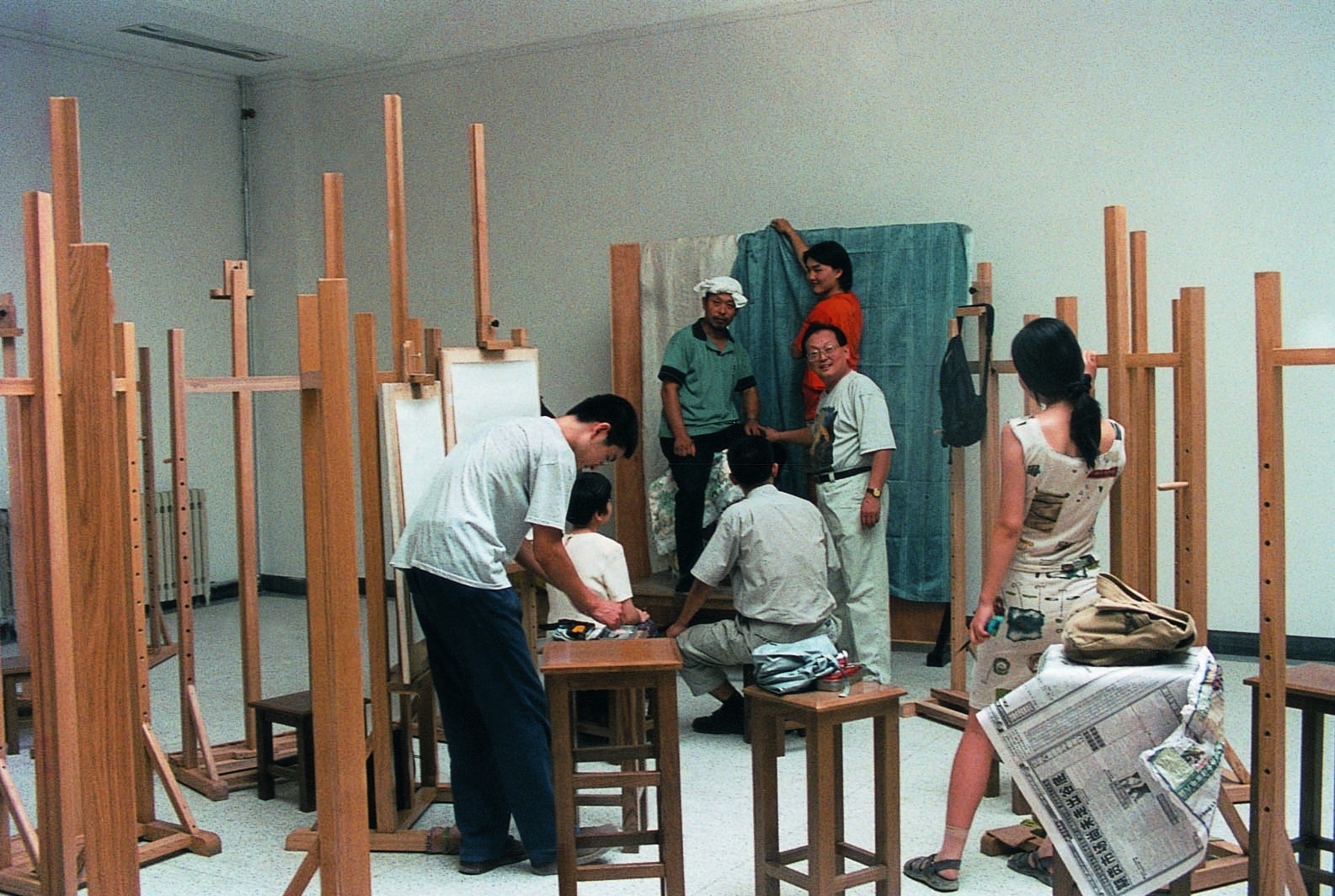
Wen Guozhang, the first Dean of Foundation Program at the School of Fine Art, Zhang Lujiang, Deputy Dean of Foundation Program at the School of Fine Art were organizing teaching at that time ( in 2001).
It was from this year that the structural transformation was completed. Reviewing the construction process of the Foundation Program, it was not only accompanied by discussions and even controversies of the system and teaching methods of CAFA, but it was also based on the issues of Chinese and Western paintings, tradition and innovation, and even the framework of fine art itself. The “wide foundation” is the basic principle followed by the Foundation Program at the School of Fine Art, CAFA on this path of exploration.
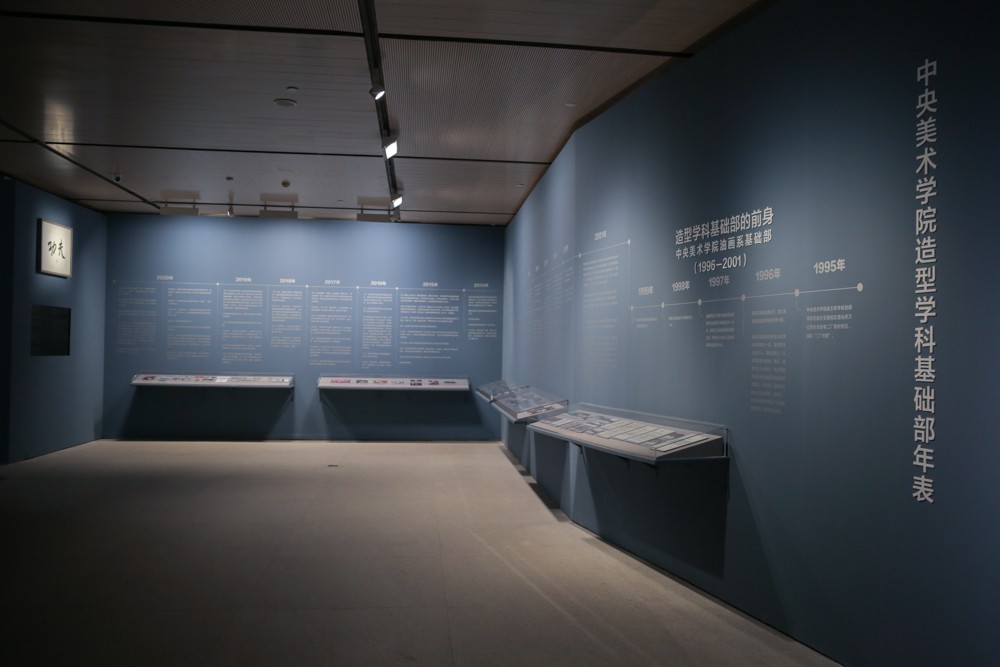
Exhibition View of “History”
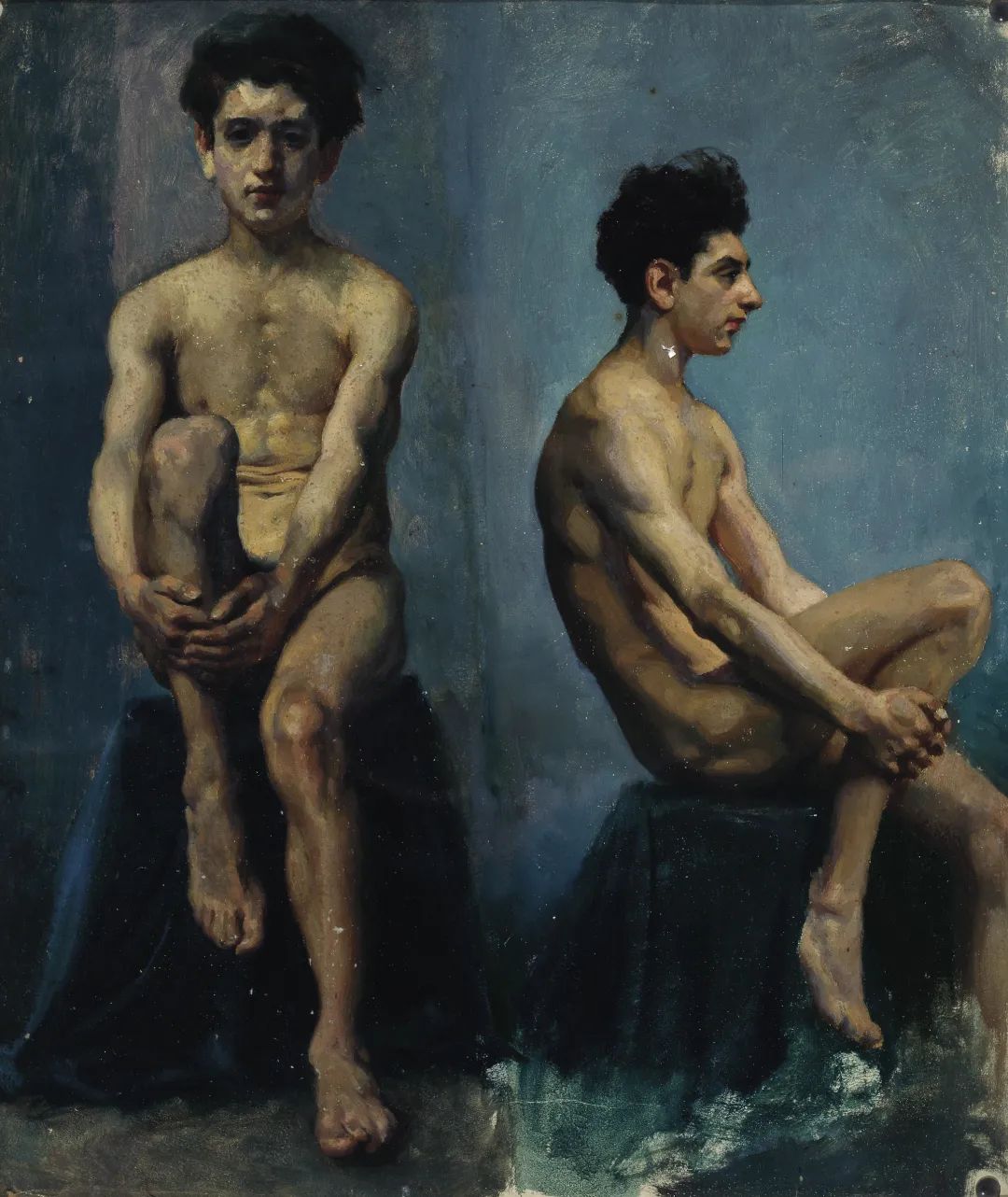
Xu Beihong, “A Front and Side Sketch of Male Nude”, 52×44cm, Oil on paper, 1924
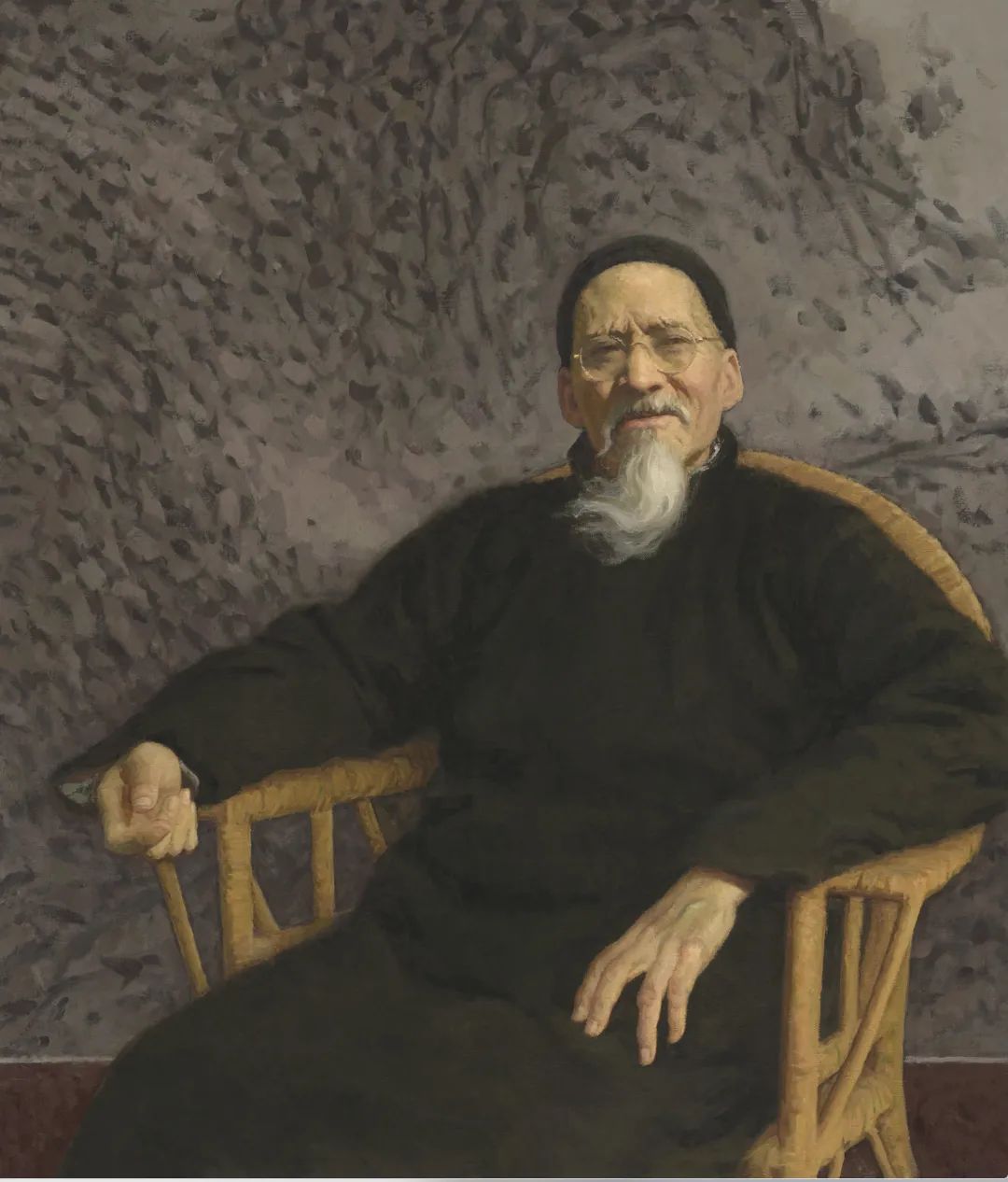
Jin Shangyi, “Huang Binhong in His Late Years”, 115×99cm, Oil on canvas, 1996
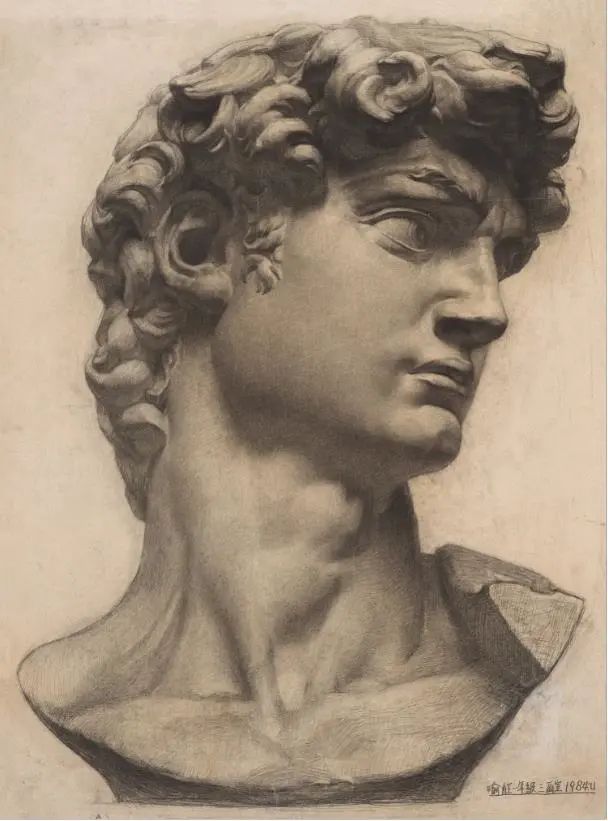
Yu Hong, “Sketch of David”, 100×73.5cm, Pencil on paper, 1984
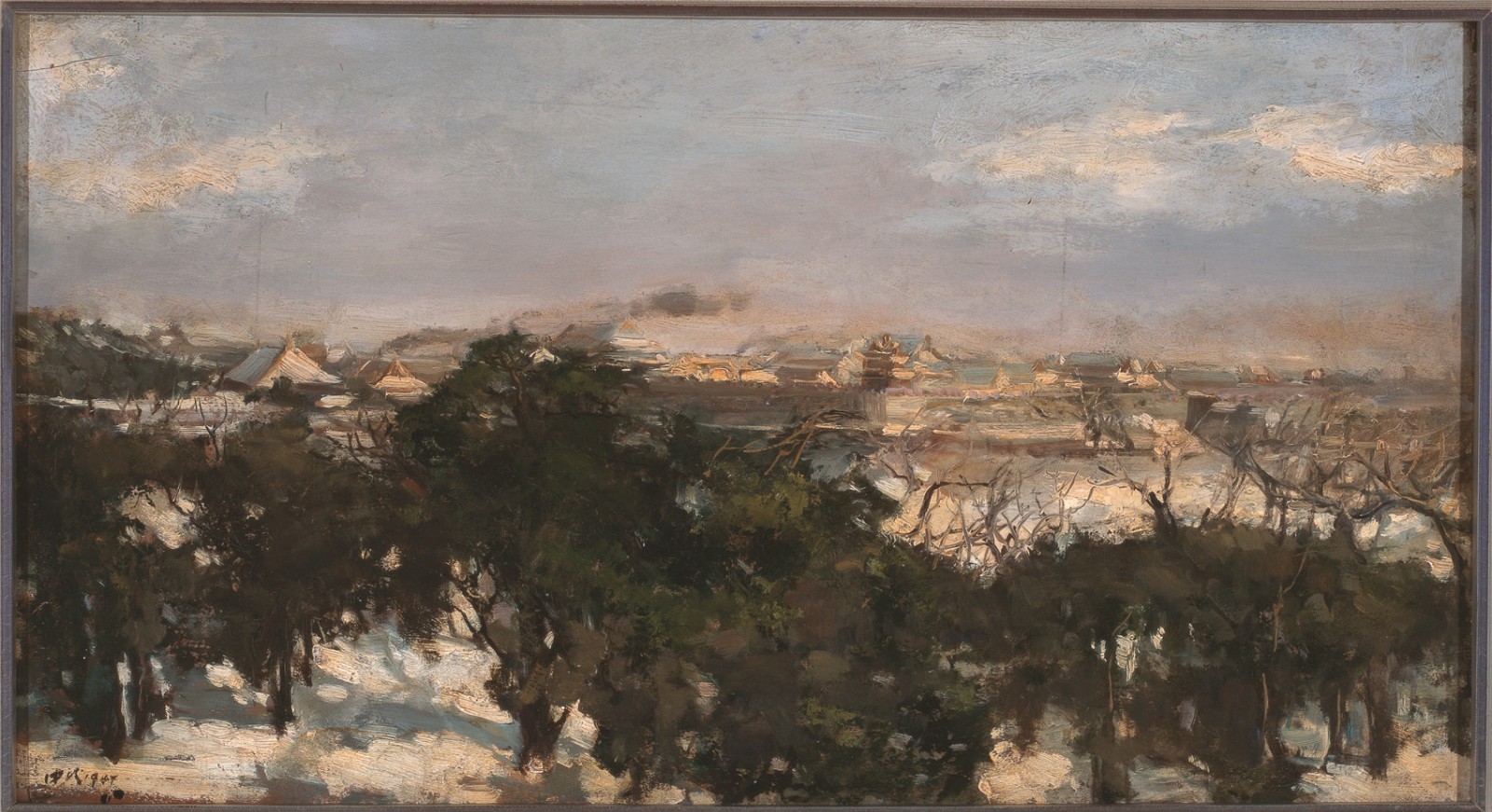
Ai Zhongxin, “Remnants of Snow in the Forbidden City”, 38×70cm, Oil on canvas, 1947
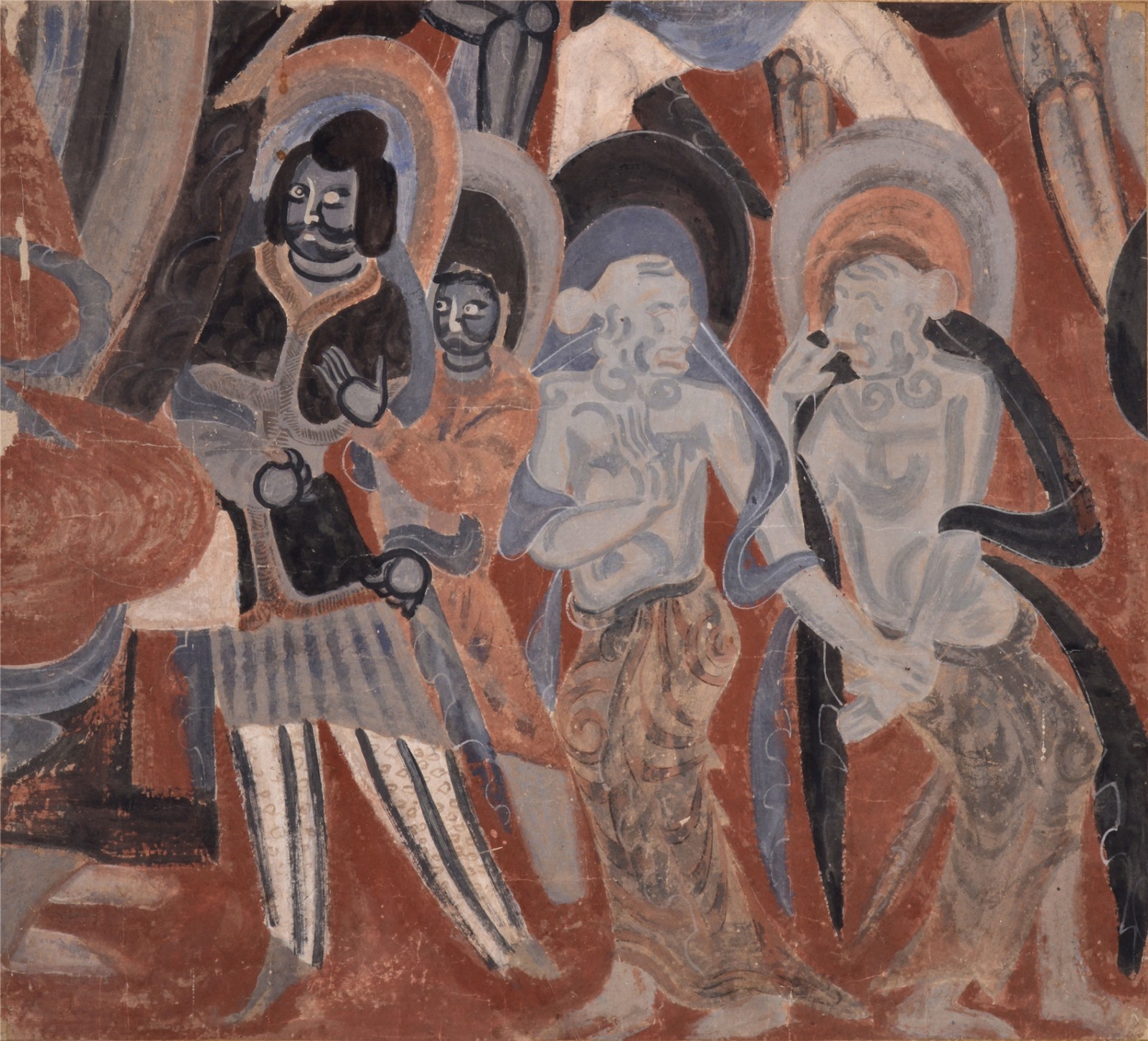
Dong Xiwen, Copying “The Change of Demons (detail)”, 70.5×63cm, Ink and color on paper, 1954
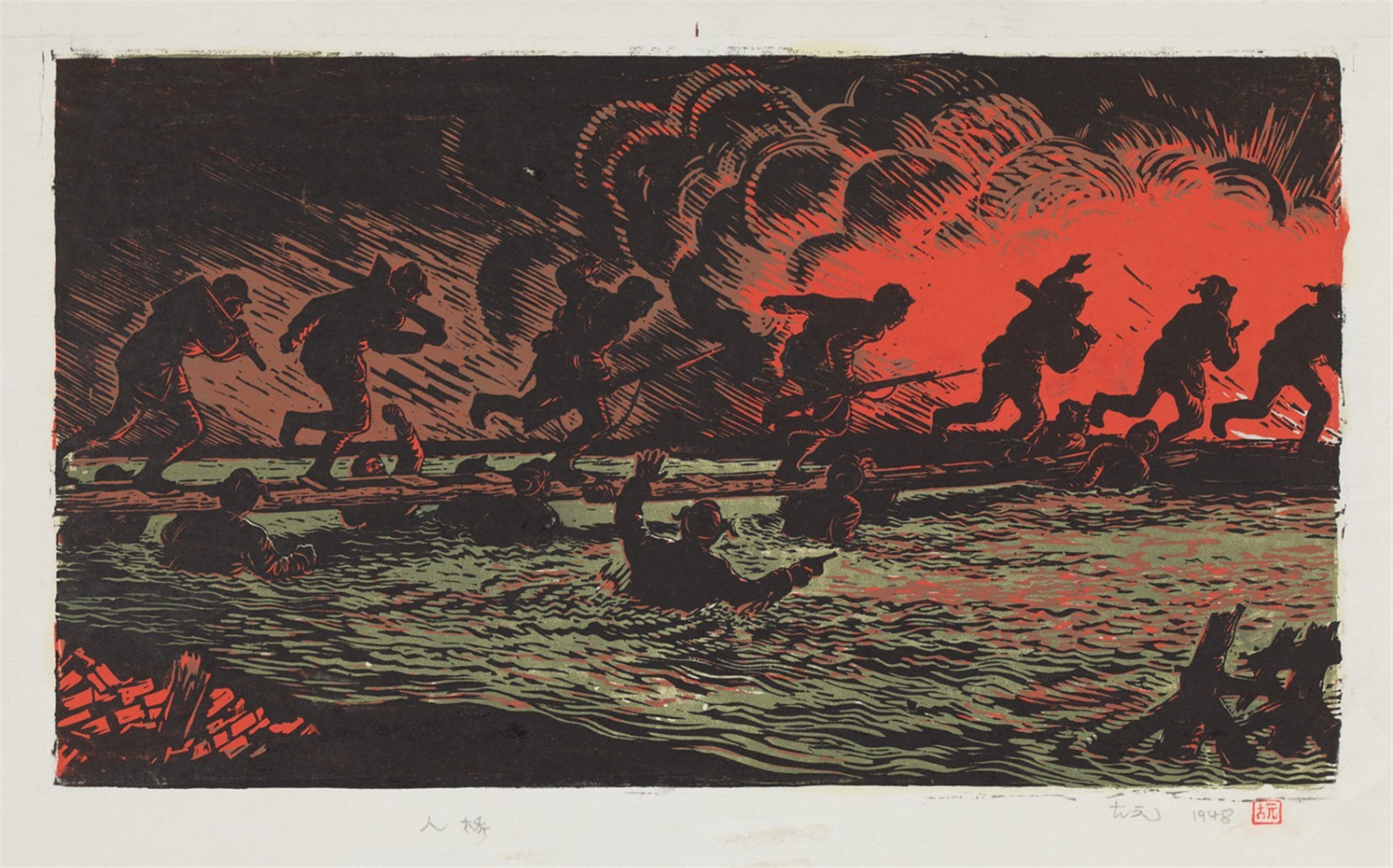
Gu Yuan, “Bridge of Men” 20.5×36cm, Colored woodblock printing, 1948
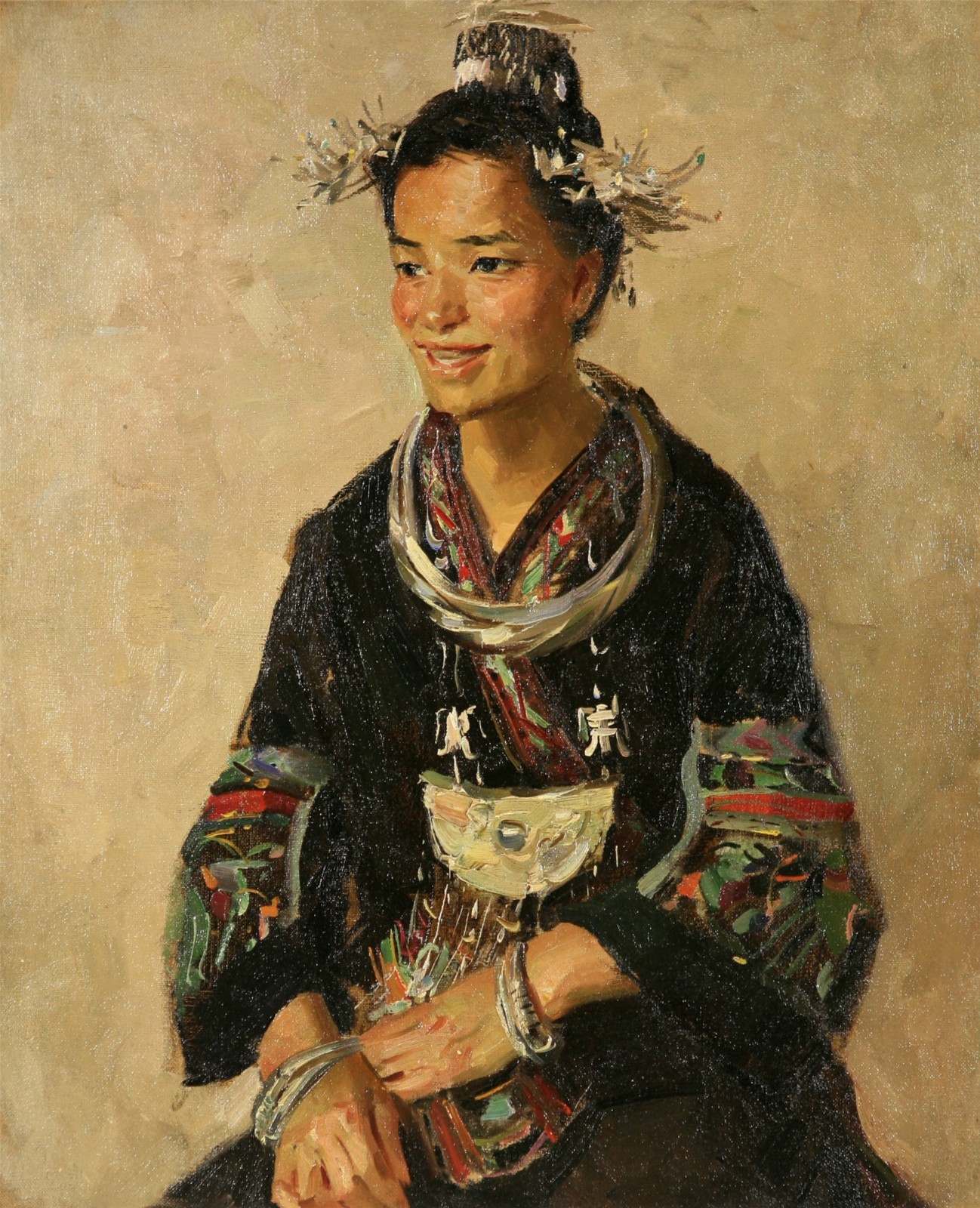
Hou Yimin, “Characters”, 45×38cm, Oil on canvas, 1954
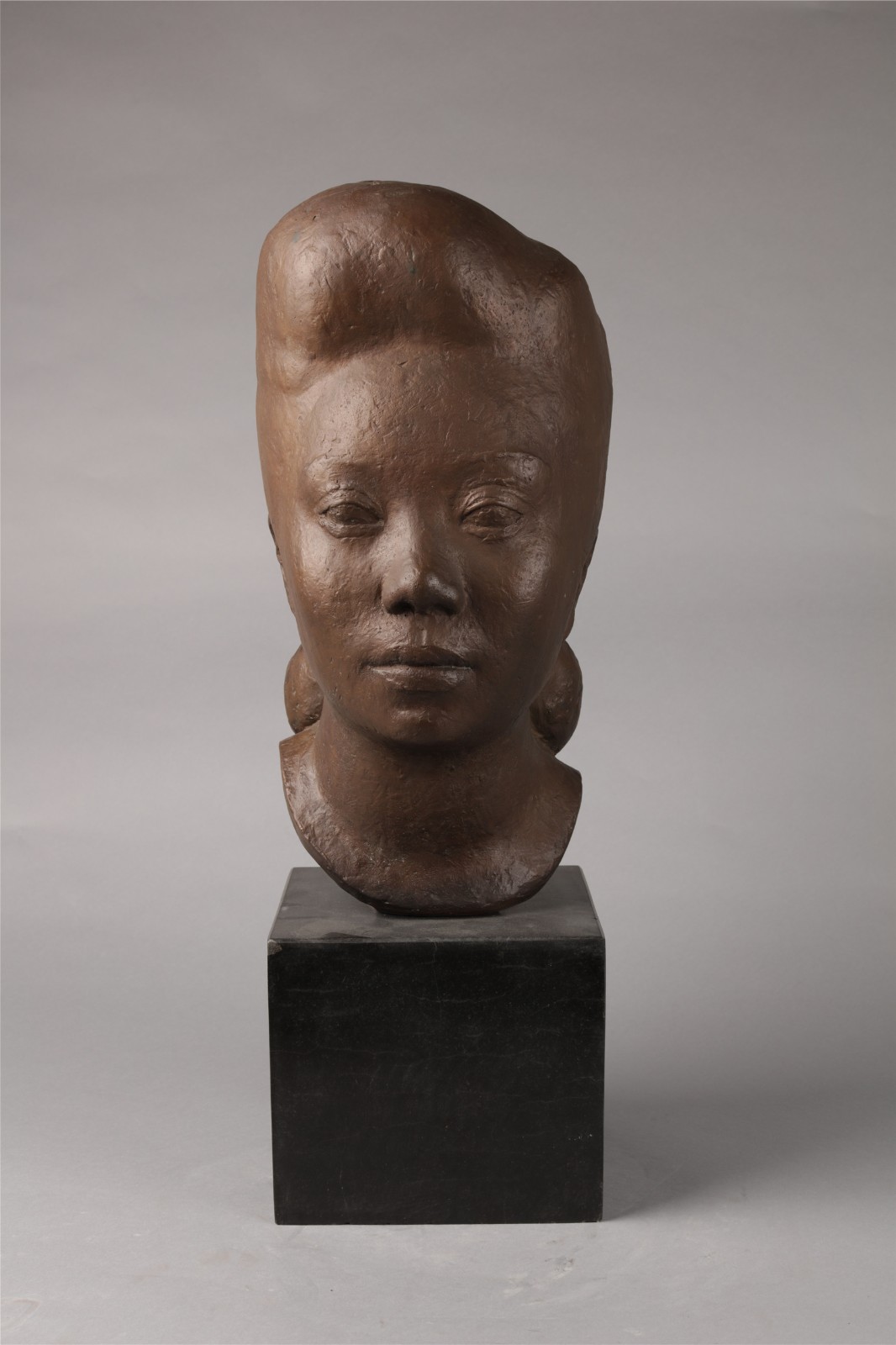
Hua Tianyou, “Miss Hu’s Head”, 41×18cm, Cast bronze, 1947
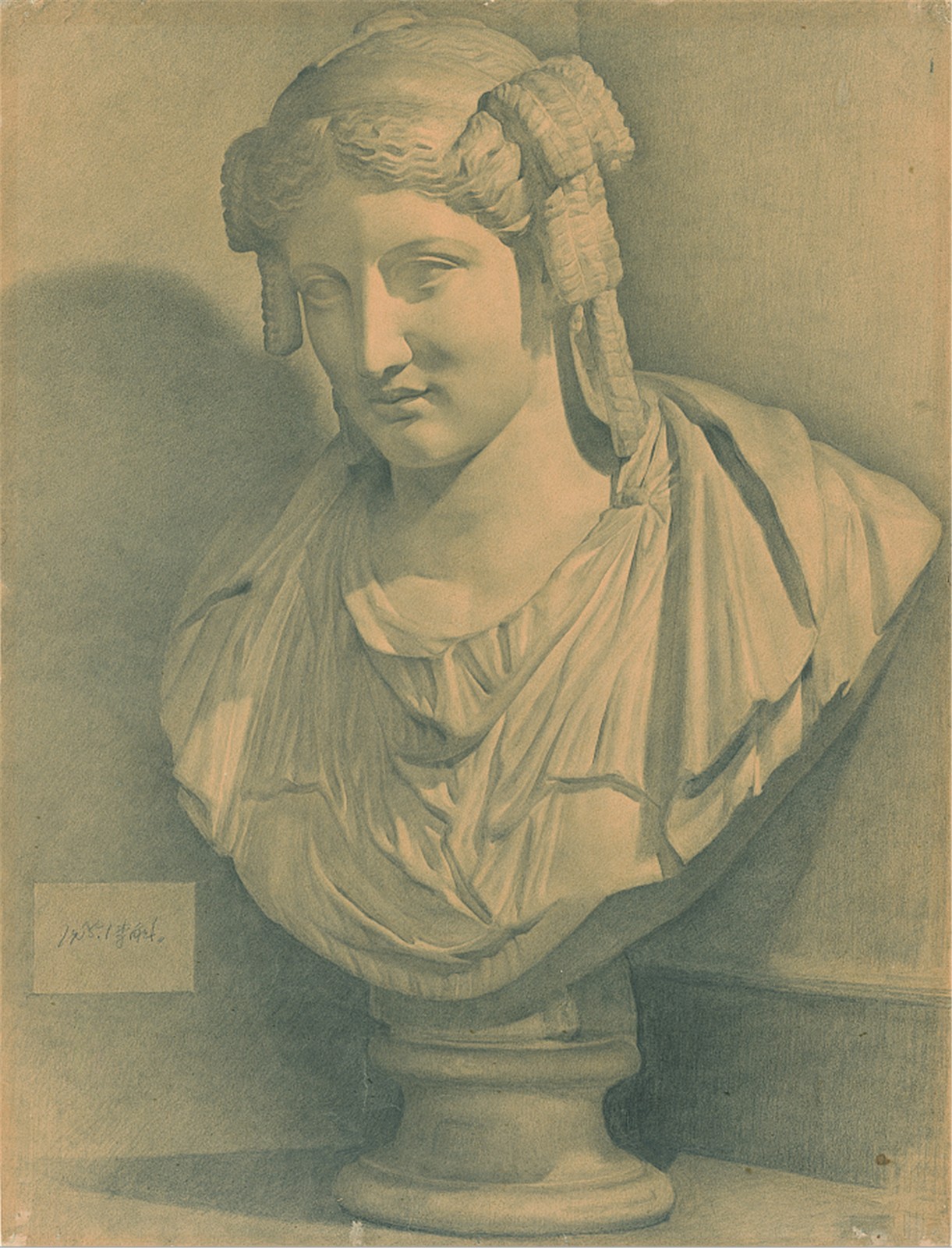
Li Hu, “Sketch of Plaster”, 75.5×57cm, Pencil on paper, 1955
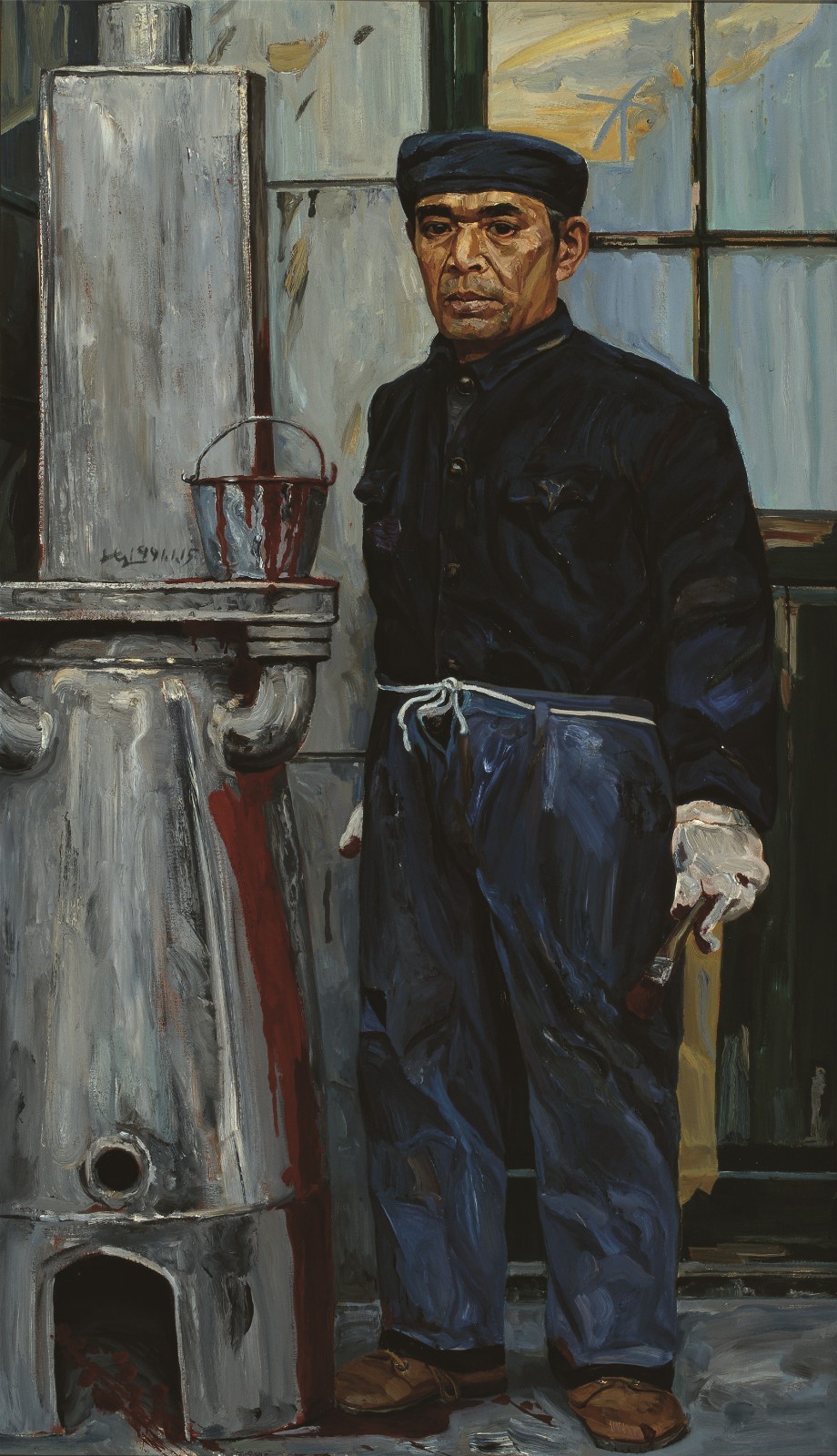
Liu Xiaodong, “The Painter”, 160×91cm, Oil on canvas, 1991
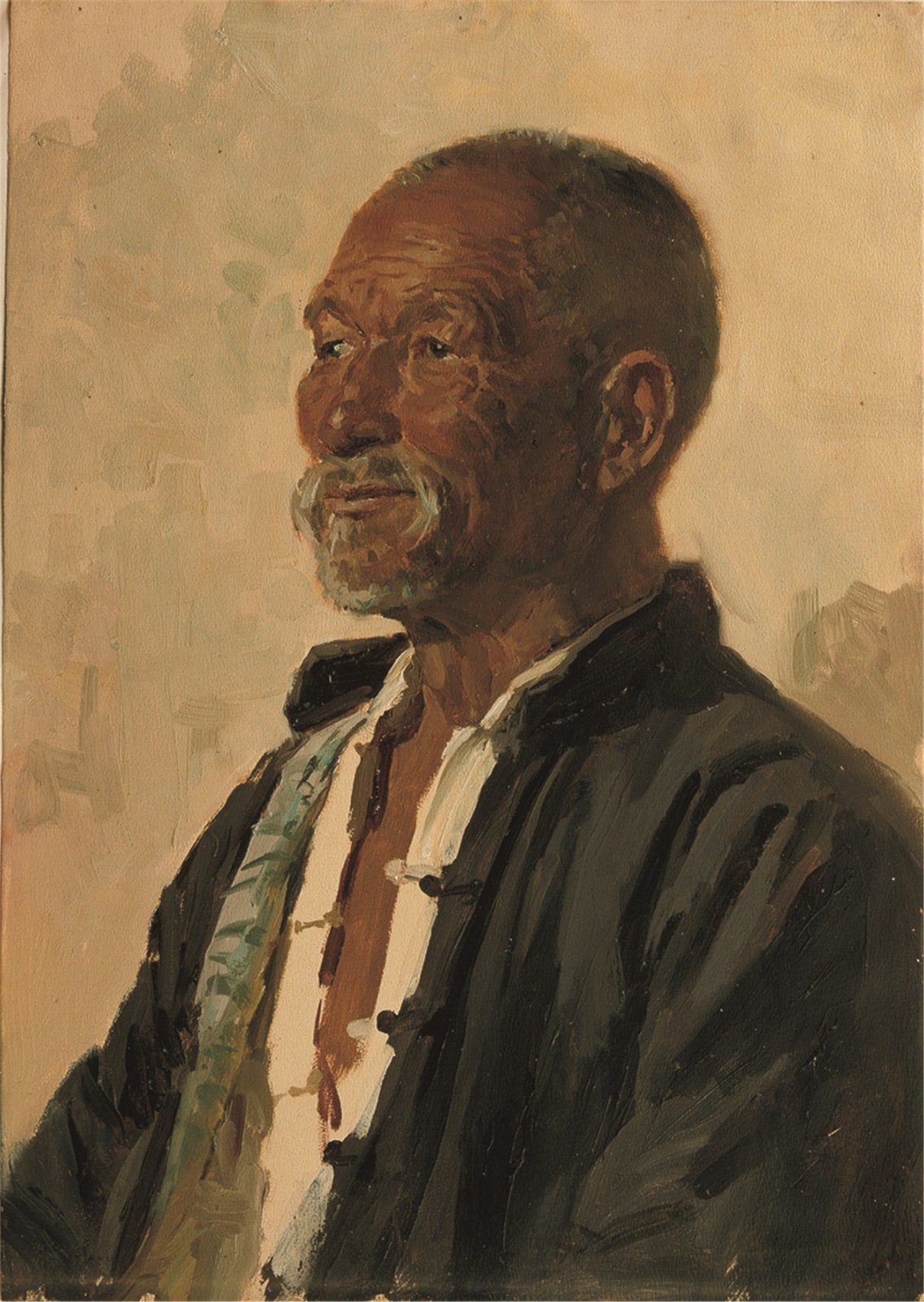
Wang Shikuo, “Old Boatman 2”, 55×39cm, Oil on paper, 1973
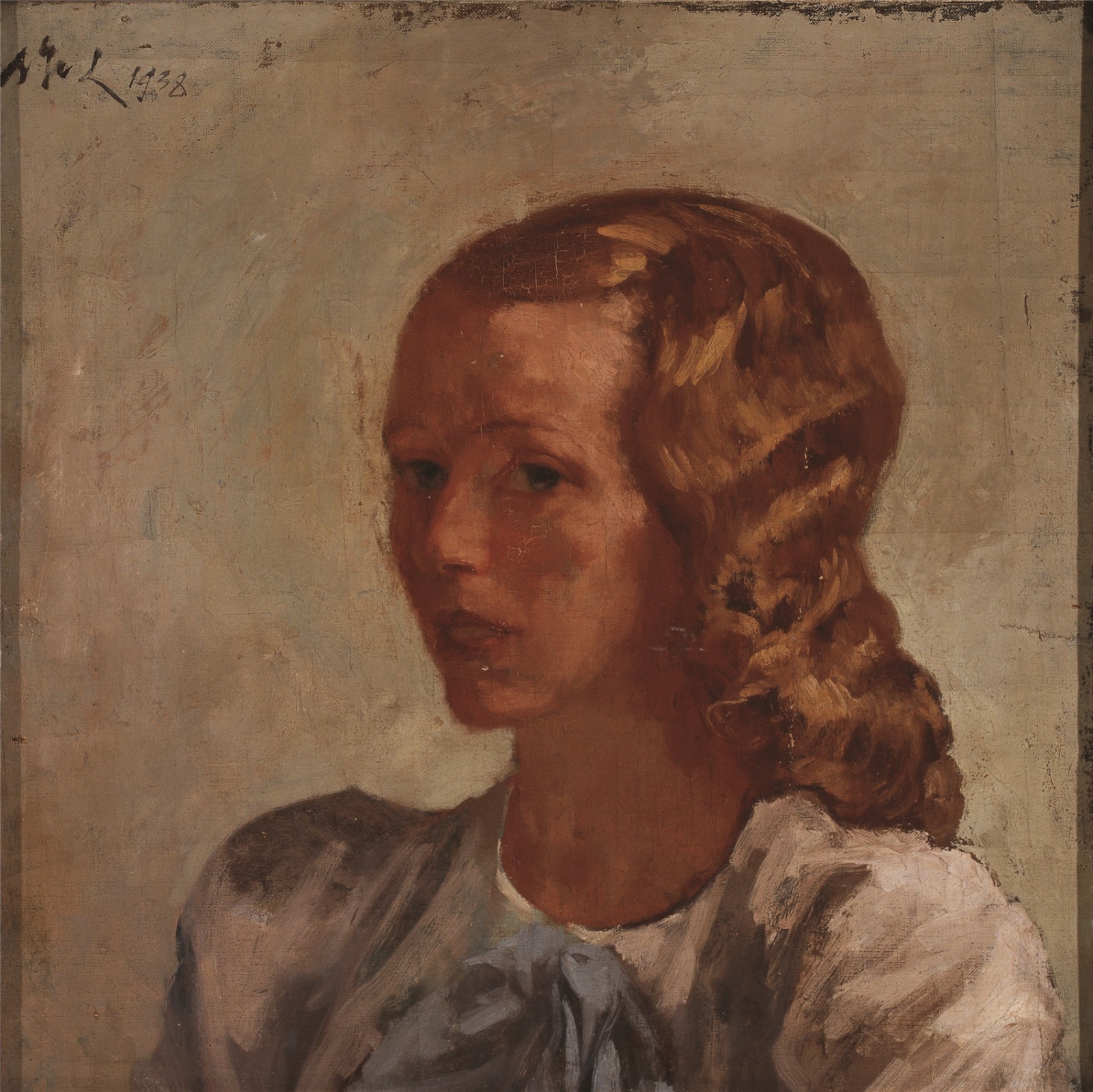
Wu Zuoren, “Portrait of Wang Henei”, 57.5×57cm, Oil on canvas, 1938
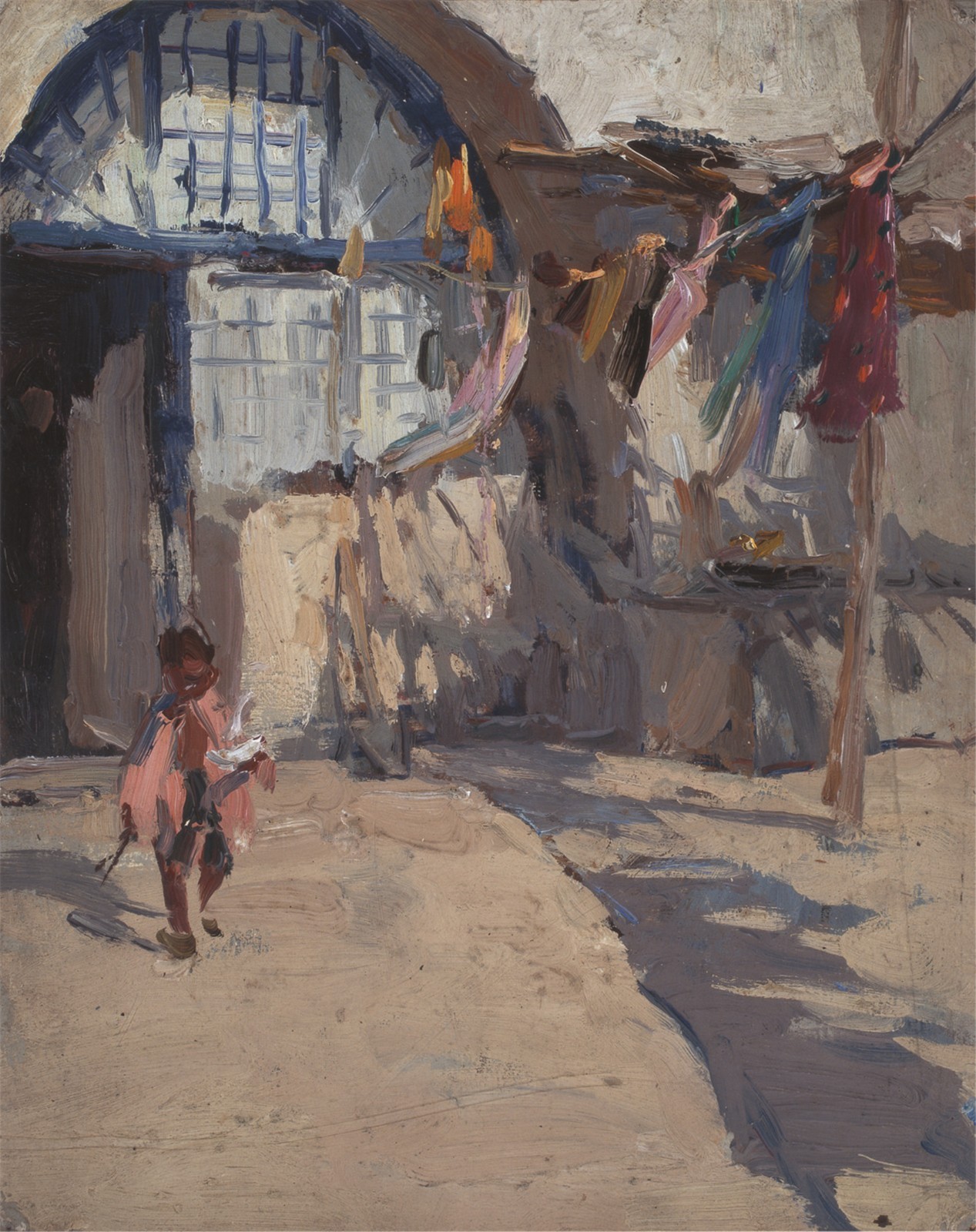
Zhong Han, “Sunlight in front of the Kiln”, 32×24cm, Oil on paper, 1962
Following the Principle of “Wide Foundation” and Passing on the Soul of “Art in Kung Fu”
“Wide foundation” is reflected in the teaching practice of the Foundation Program of School of Fine Art through the two core courses of Sketching and Color, and the five supporting courses of Calligraphy, Line-drawing, Clay Sculpture, Anatomy Modelling, and Perspective. This teaching principle can be said to be a spirit that runs through this exhibition.
The traditional courses Sketching and Color from the Foundation Program at the School of Fine Art are showcased in the “Sketching” and “Color” sections, respectively, with dozens of excellent sketches and colors collected by the School to highlight its teaching achievements over twenty years. According to Mr. Xu Beihong, “Sketching is the foundation of all plastic arts.” It has such a profound impact on the teaching policy of Central Academy of Fine Arts. It is also worth noting that Mr. Xu Beihong did not just agree that art education should be rigorous and solid, he also emphasized the achievement of rigorous modelling. [4] The word “foundation” is closely related to the artistic depth and width that artists can reach. The works featured in “Sketching” and “Color” sections presented in the exhibition over the years are those that were created on solid basic skills and developing towards a “heart-hand-correspondence” situation.
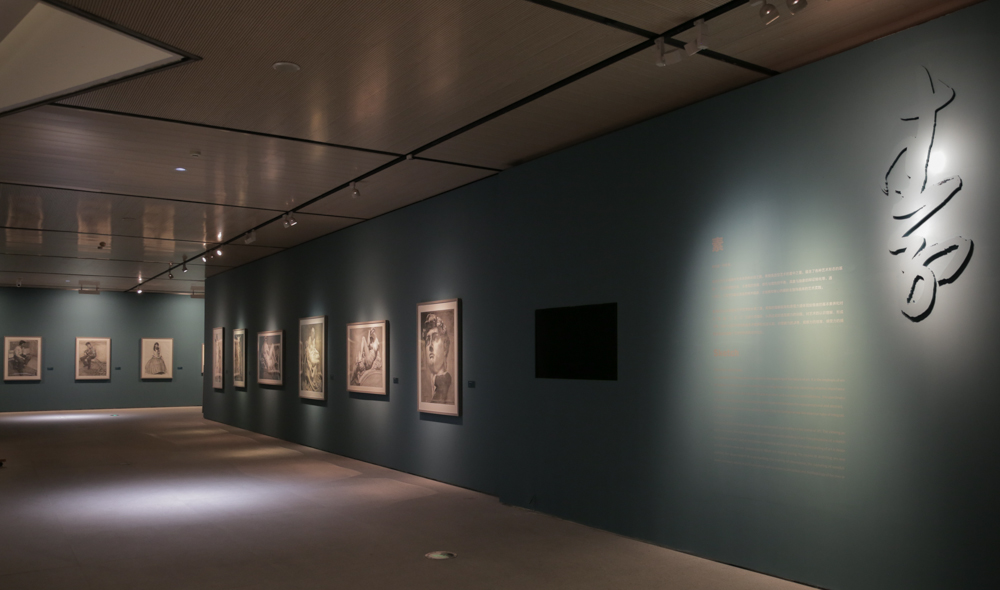
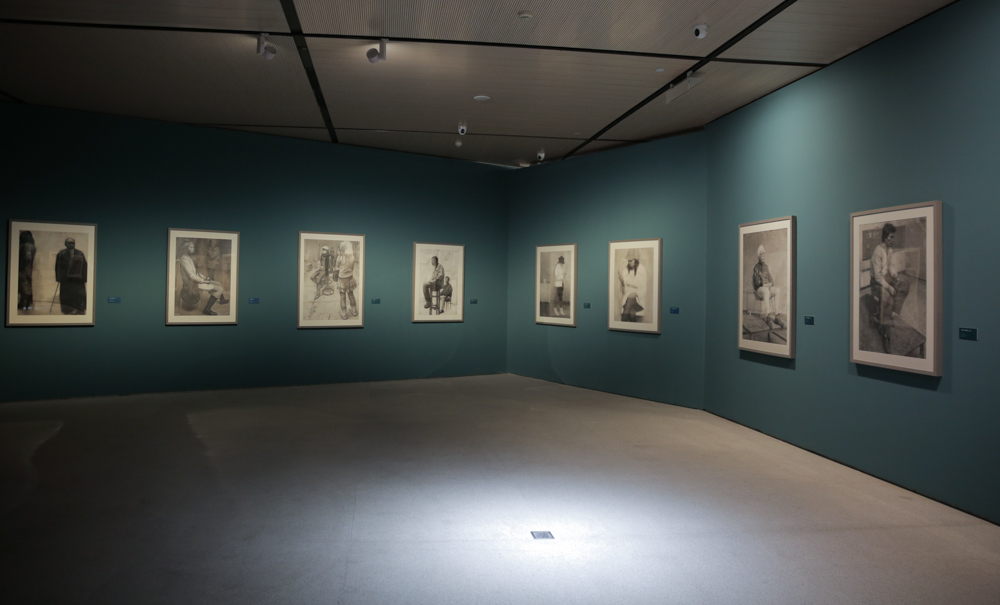
Exhibition View of “Sketch”
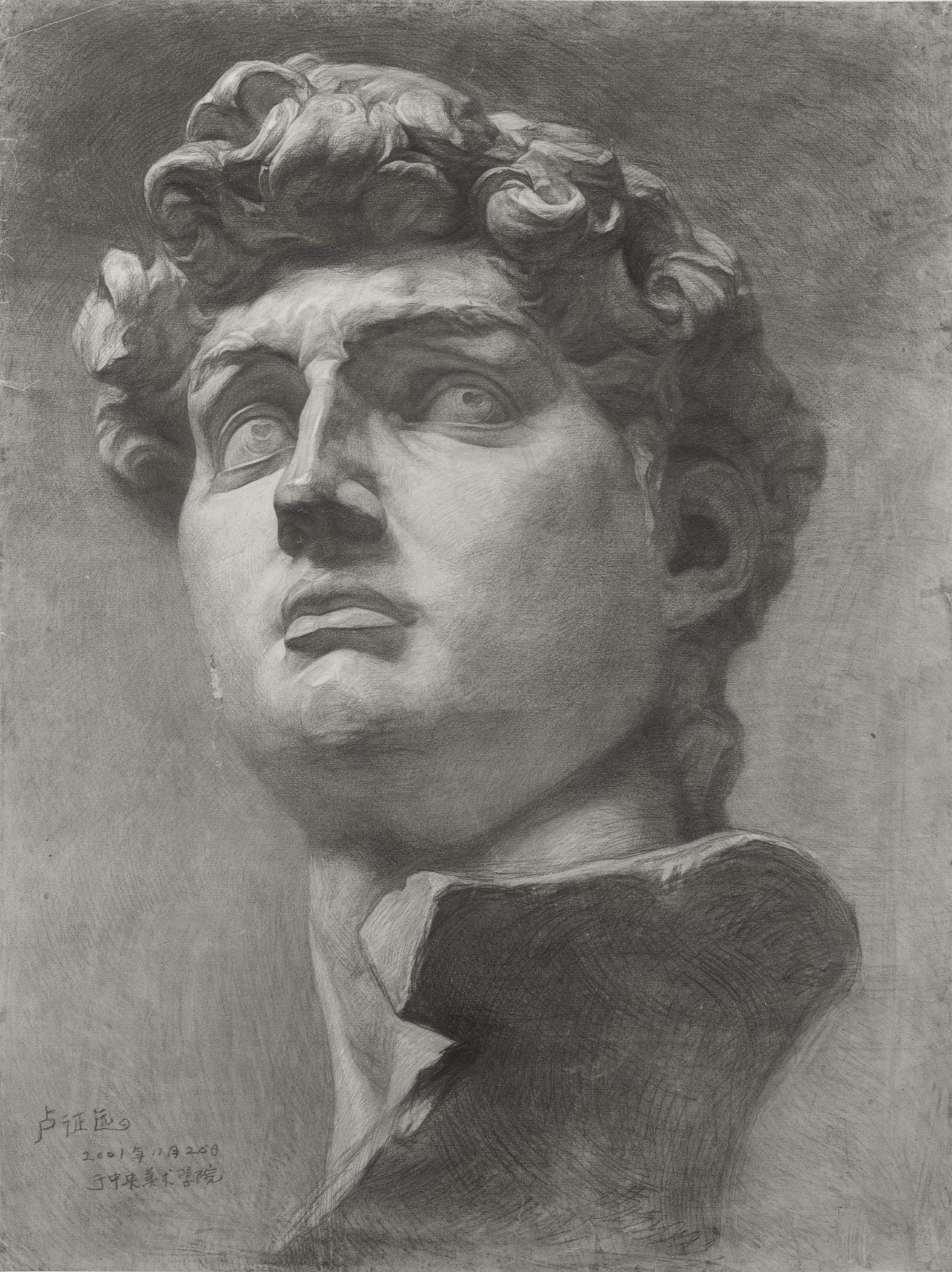
Lu Zhengyuan, “The Plaster of David”, 110×70cm, Pencil on paper, 2001, Instructor: Yuan Yuan
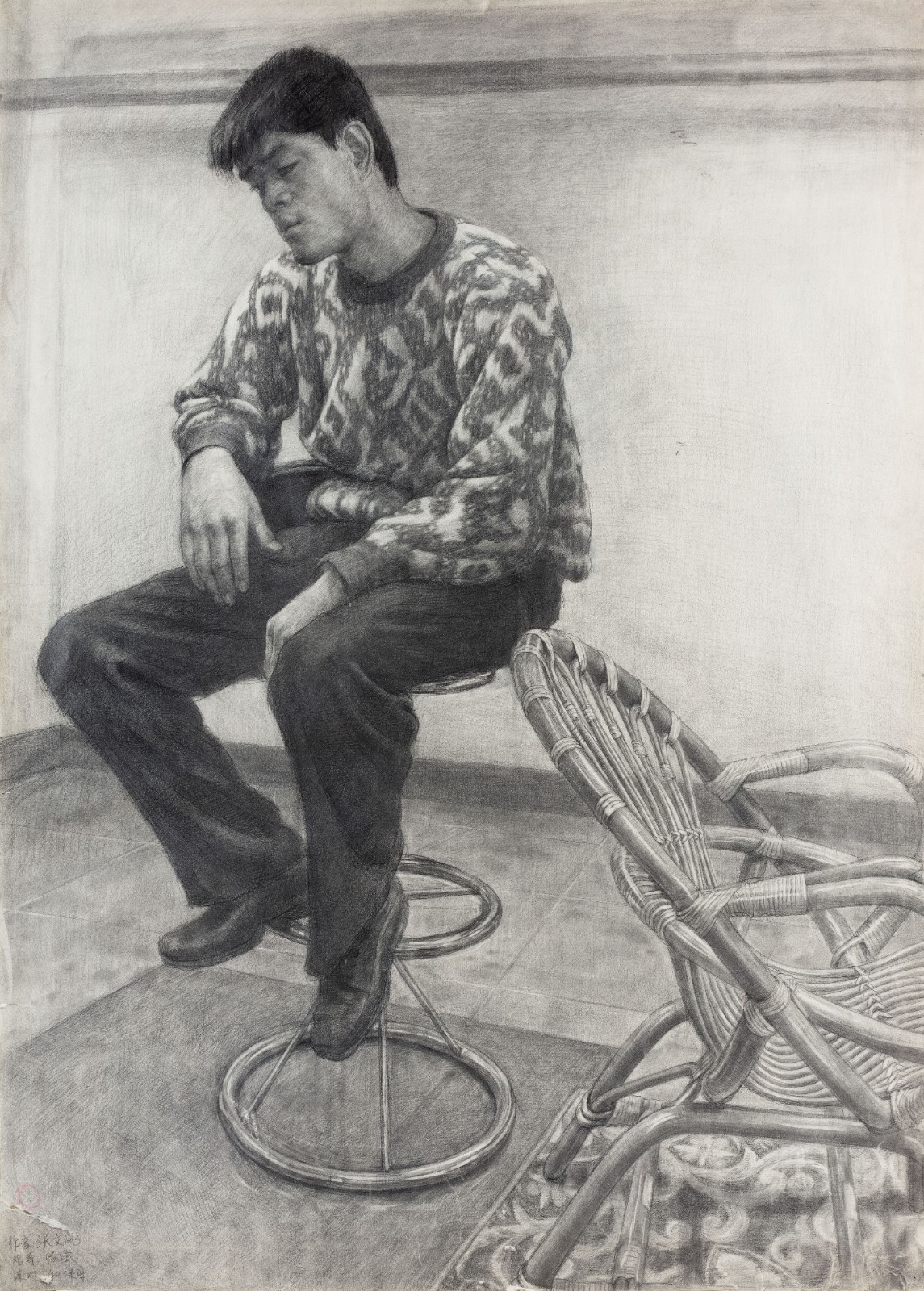
Zhang Wenfeng, “Sitting Man”, 107×77cm, Pencil on paper, 2002, Instructor: Yang Cheng
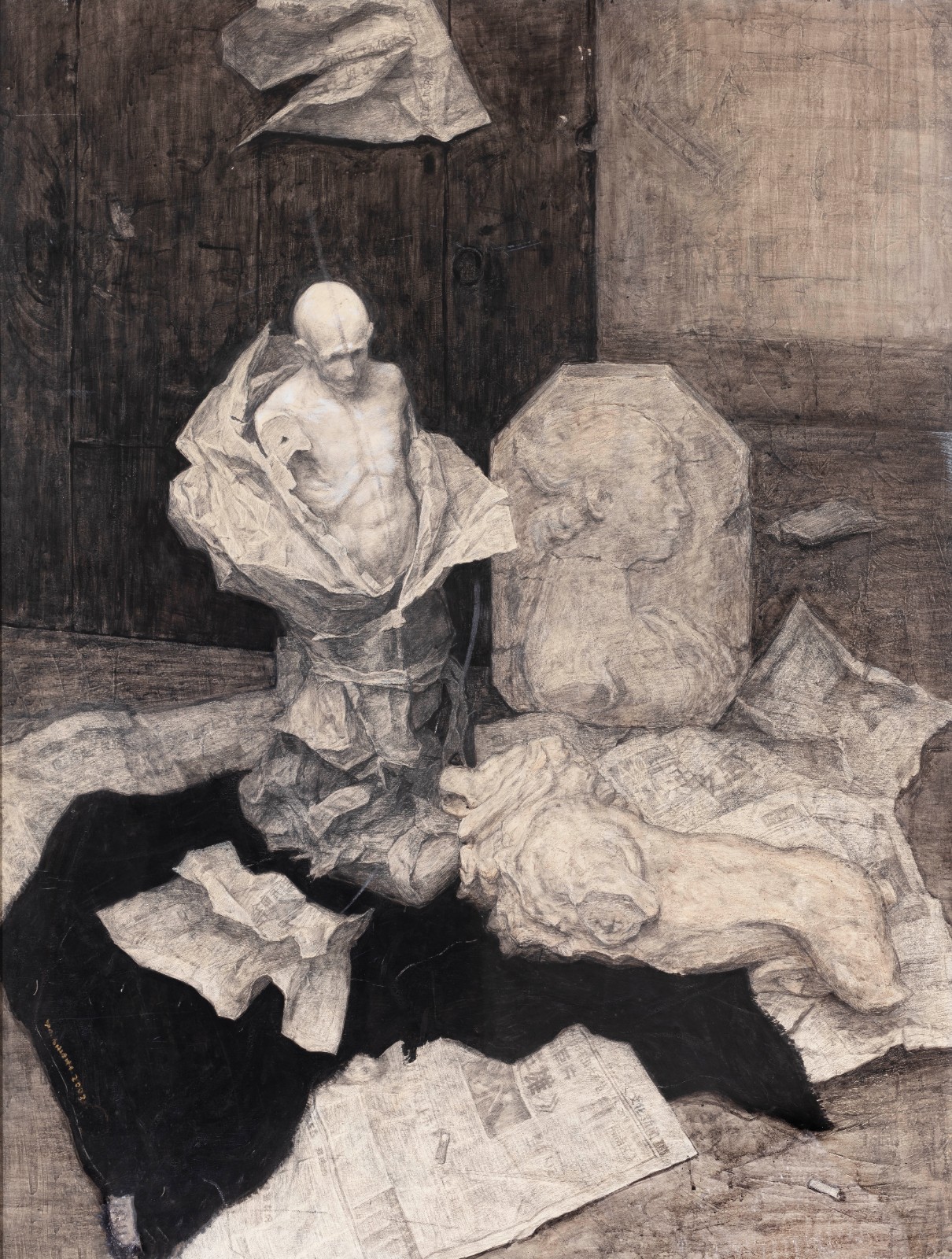
Zheng Jiang, “Still Life Combination”, 90×120cm, Charcoal and toner on paper, 2004, Instructor: Ye Nan
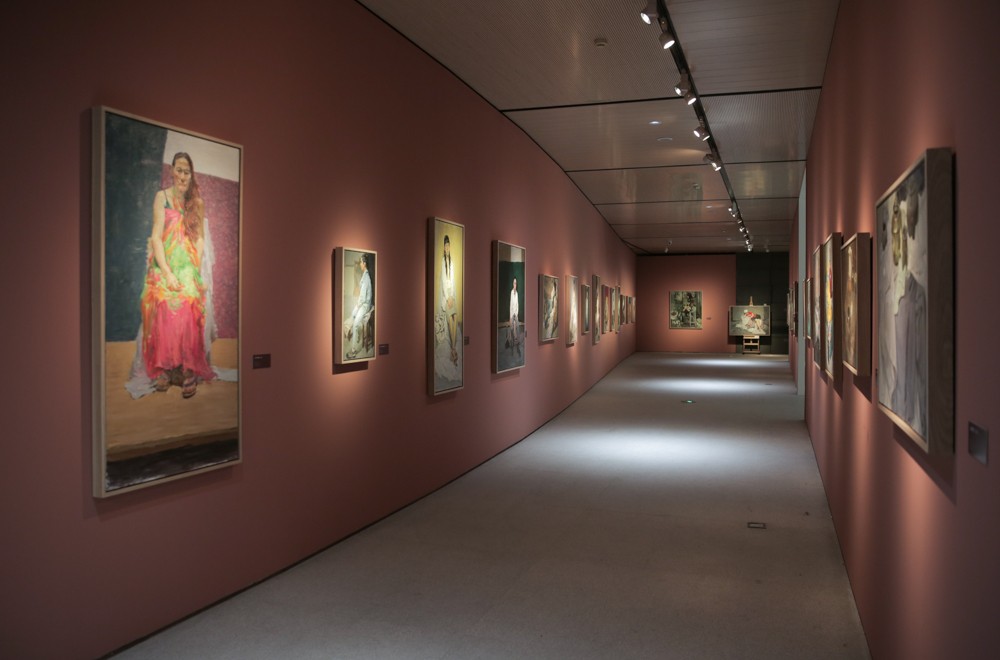
Exhibition View of “Color”
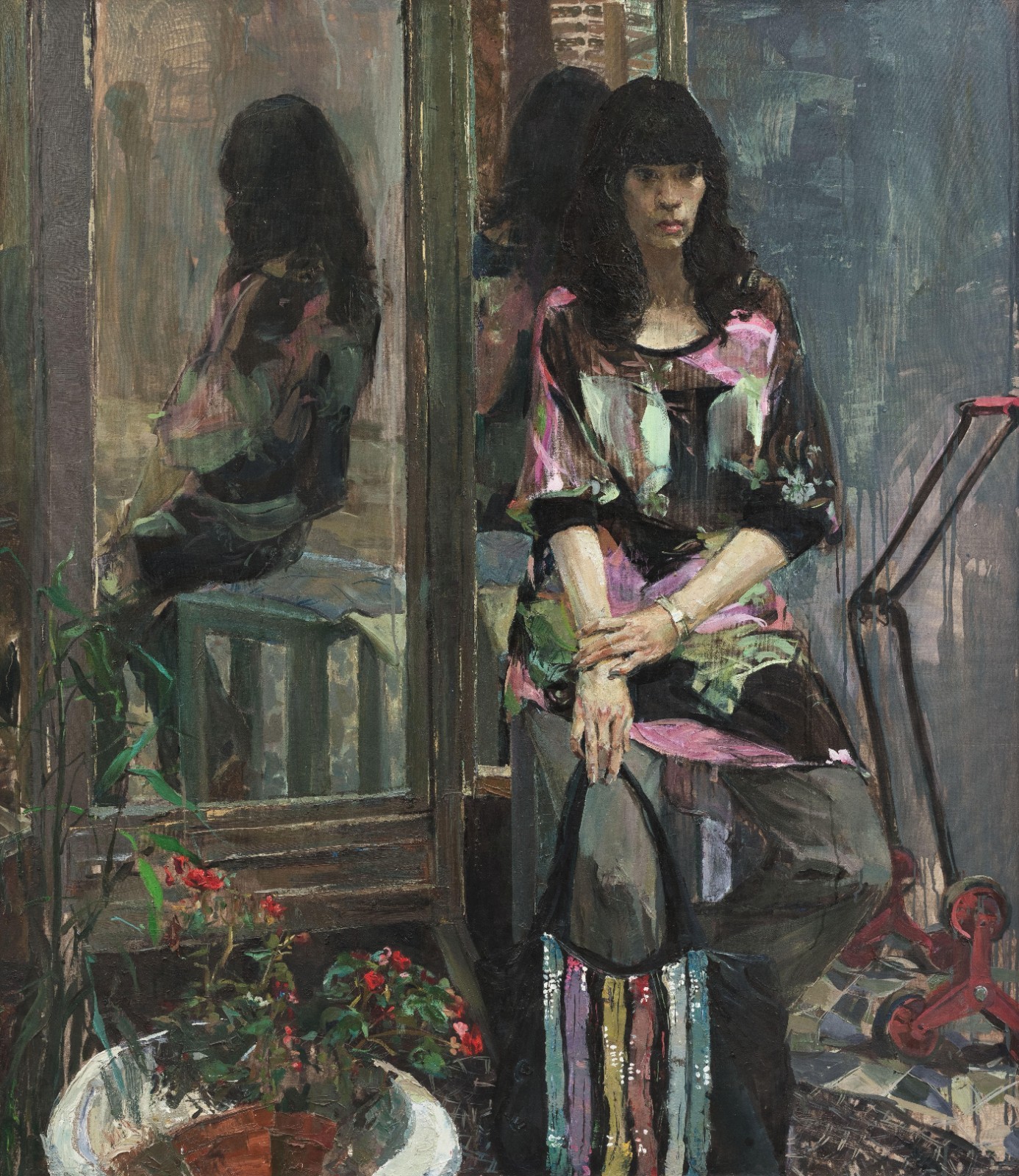
Guo Shuling, “Full-length Portrait of Young Woman”, 150×130cm, Oil on canvas, 2007, Instructor: Kang Lei
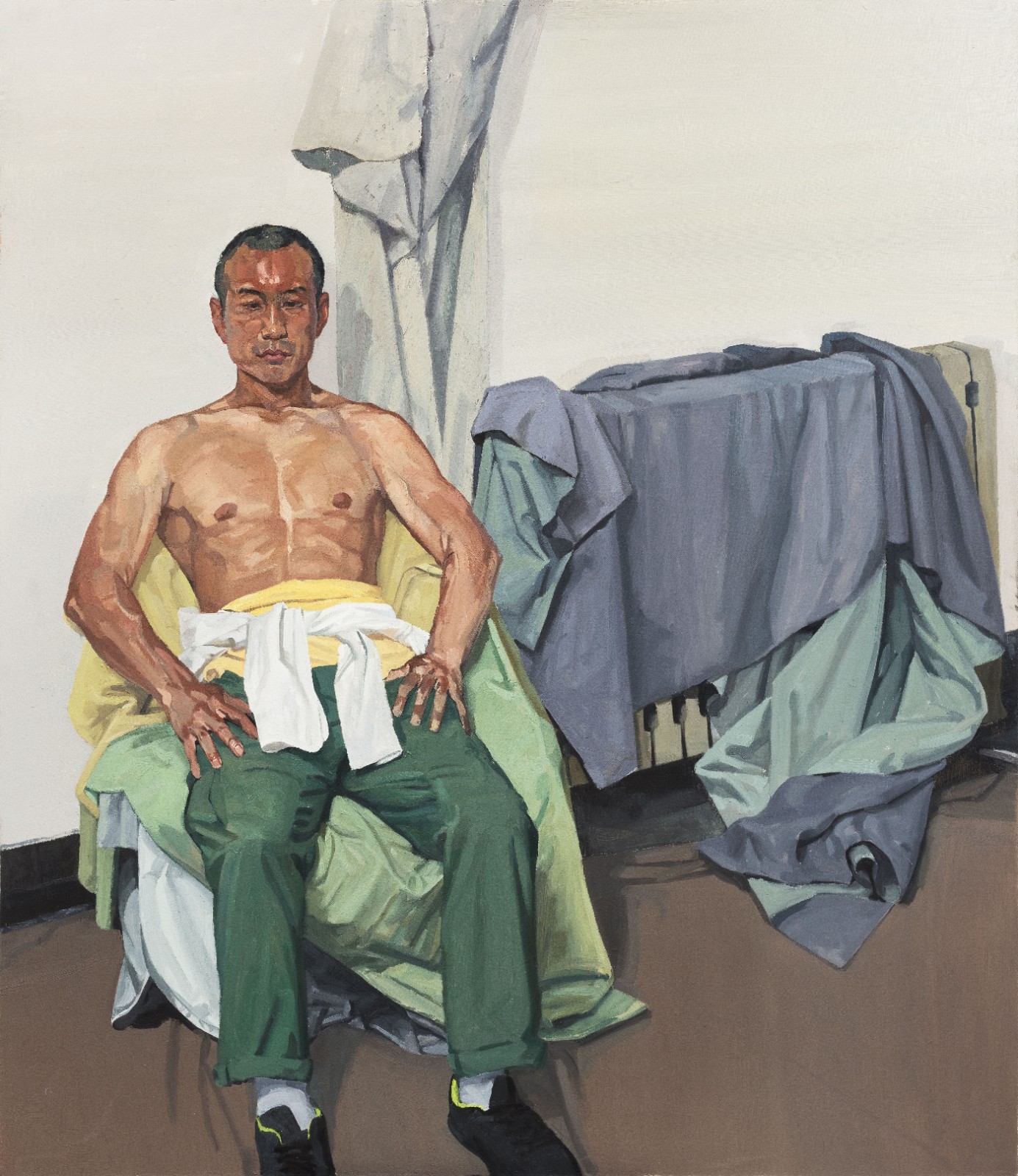
Wang Jiaxing, “Full-length Portrait of Young Man”, 130×150cm, Oil on canvas, 2016, Instructor: Li Ronglin
The so-called “Fieldwork” refers to the traditional teaching method of “Sketching from Life”, which has always been an important part of the teaching activities of the Foundation Program. The two-week outdoor sketching teaching leads students to study shapes, light and color in nature, and it also provides a rare opportunity to get out of the studio to learn about life experiences in society and obtain inspiration.
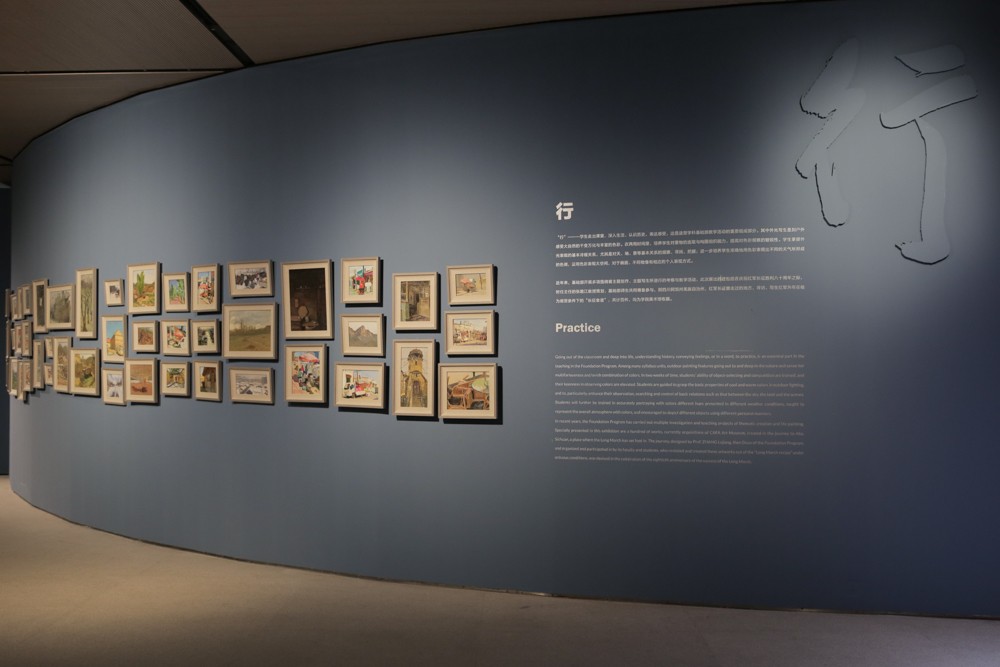
Exhibition View of “Fieldwork”
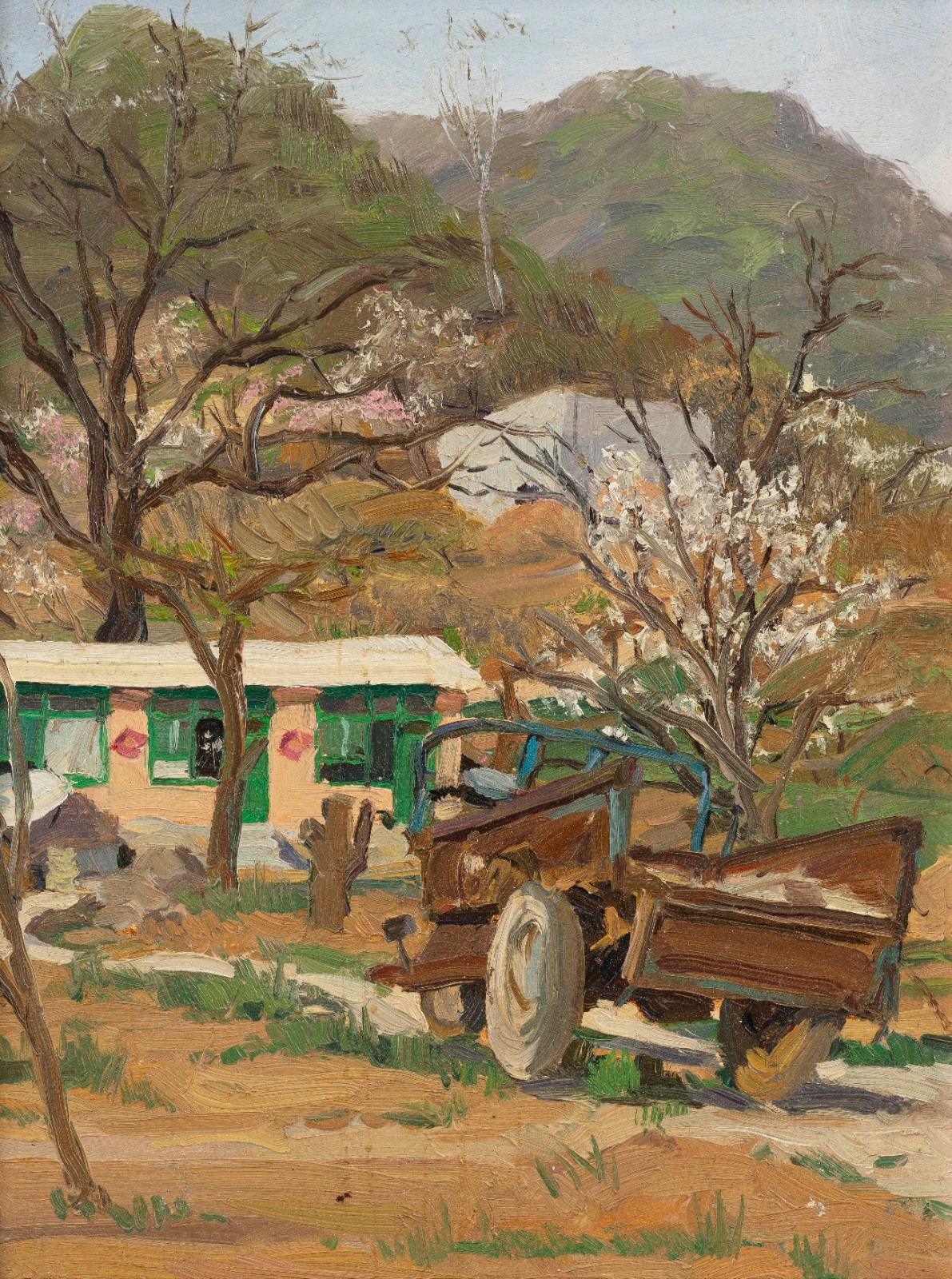
Huang Lan, “Sketch Landscape”, 30×40cm, Oil on canvas, 2010, Instructors: Yu Chen, Kang Lei
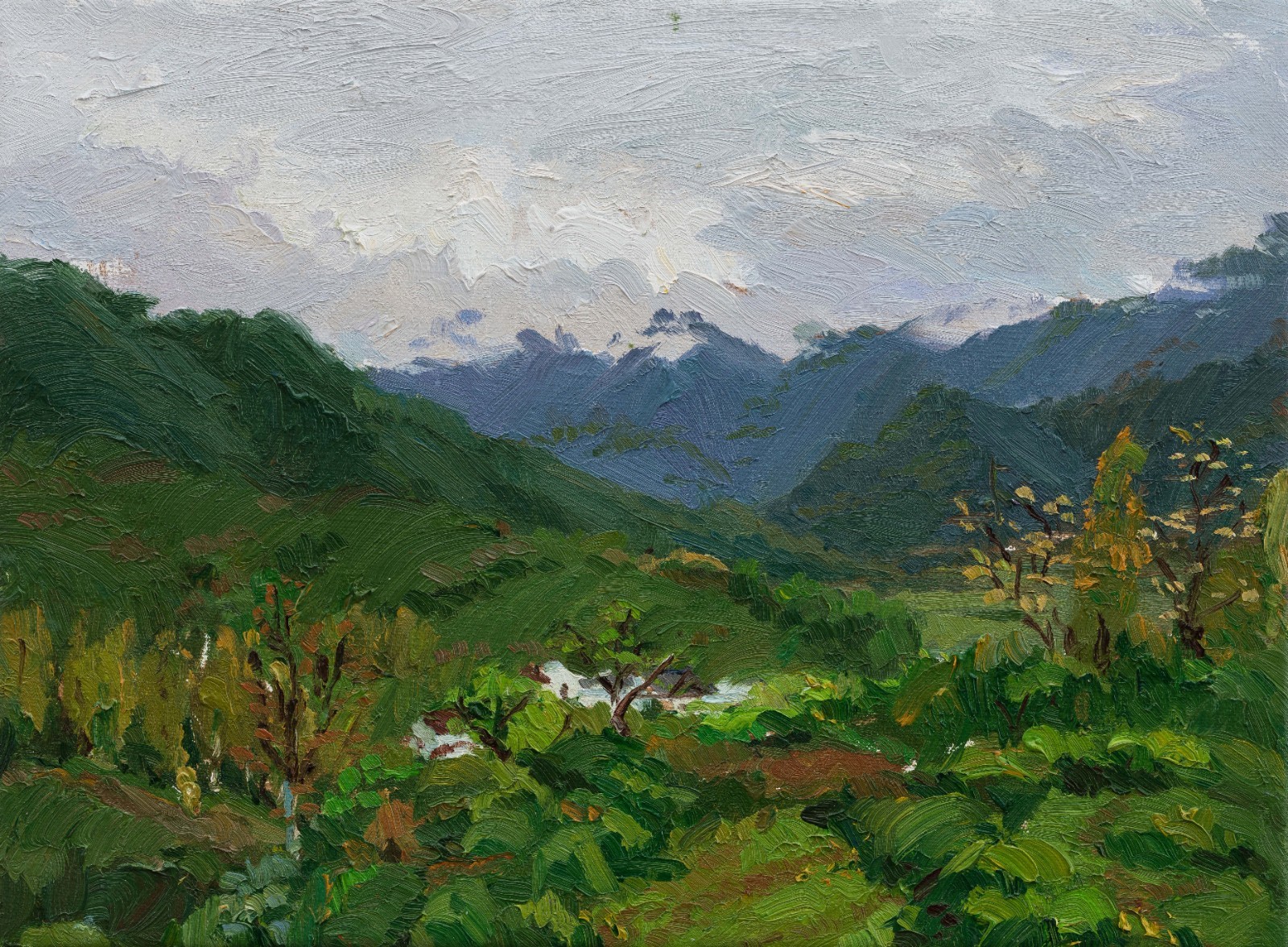
Liang Zongyao “Landscape”, 30×41cm, Oil on canvas, 2016, Instructor: Zhang Lujiang
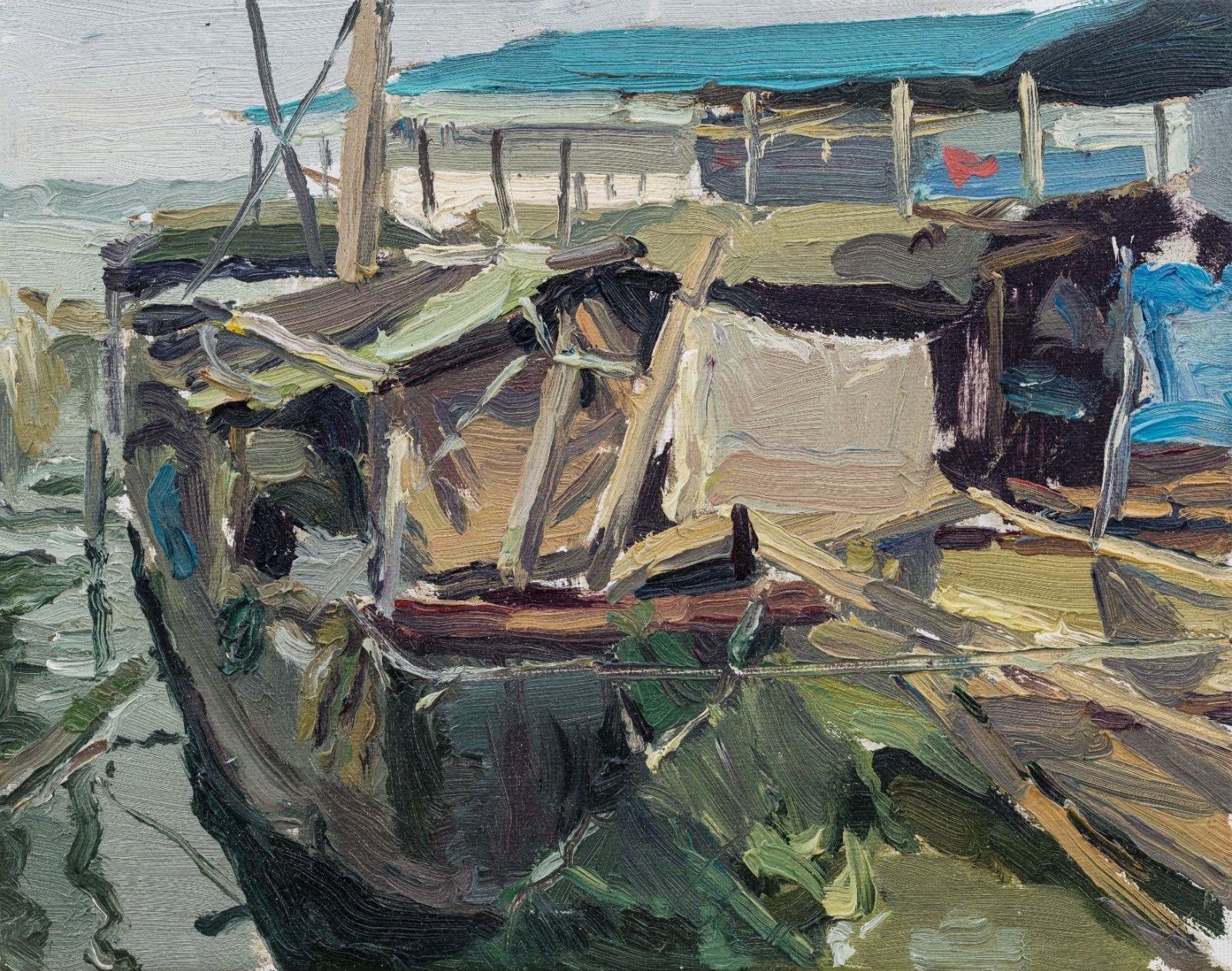
Huang Yongxin, “Spring Sketch”, Oil on canvas, 27×20cm 2017, Instructor: Yuan Yuan
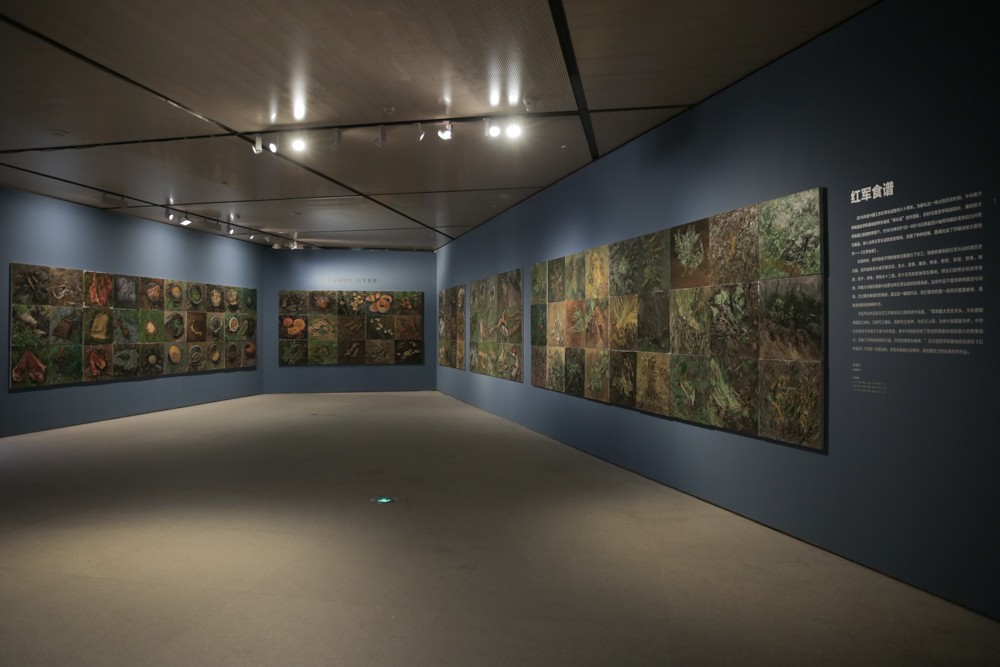
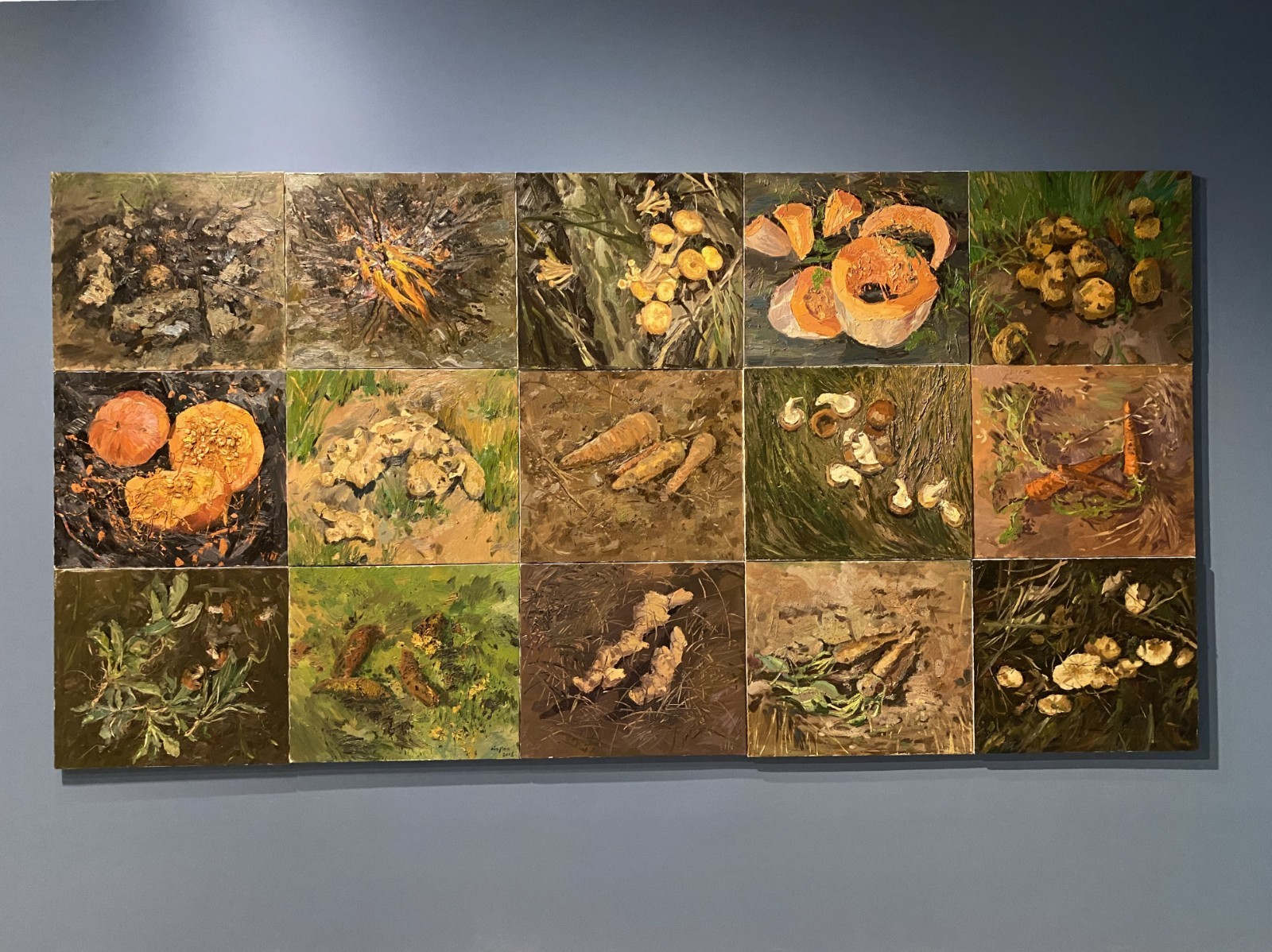
“Recipes of Red Army” (Collective Creation, a total of 100), 60×70cm (per piece), Oil and mixed media on canvas, 2016
“Wide foundation” is also reflected in the continuous exploration and expansion of the curriculum setting by the Foundation Program. On the basis of traditional sketching and courses on colour, more open courses such as Anatomy Modelling, Clay Sculpture, Perspective, Calligraphy, Line-drawing, etc. were integrated. It is aimed to consolidate the foundation of students and enhance their artistic vision and comprehensive disciplinary ability. They will further study in their respective majors to build a solid foundation with both basic knowledge and general knowledge.
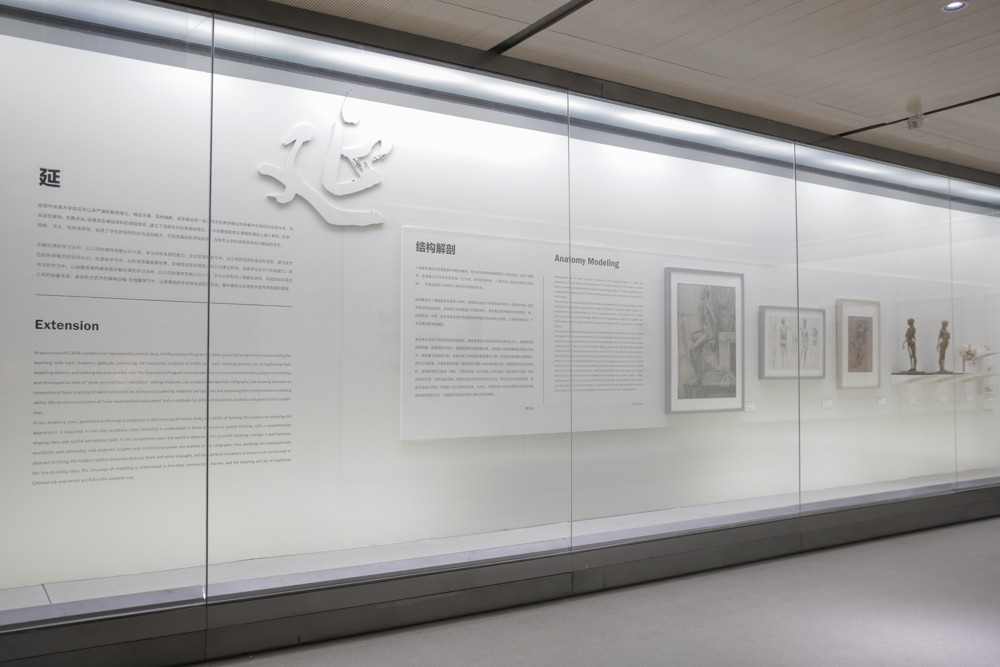
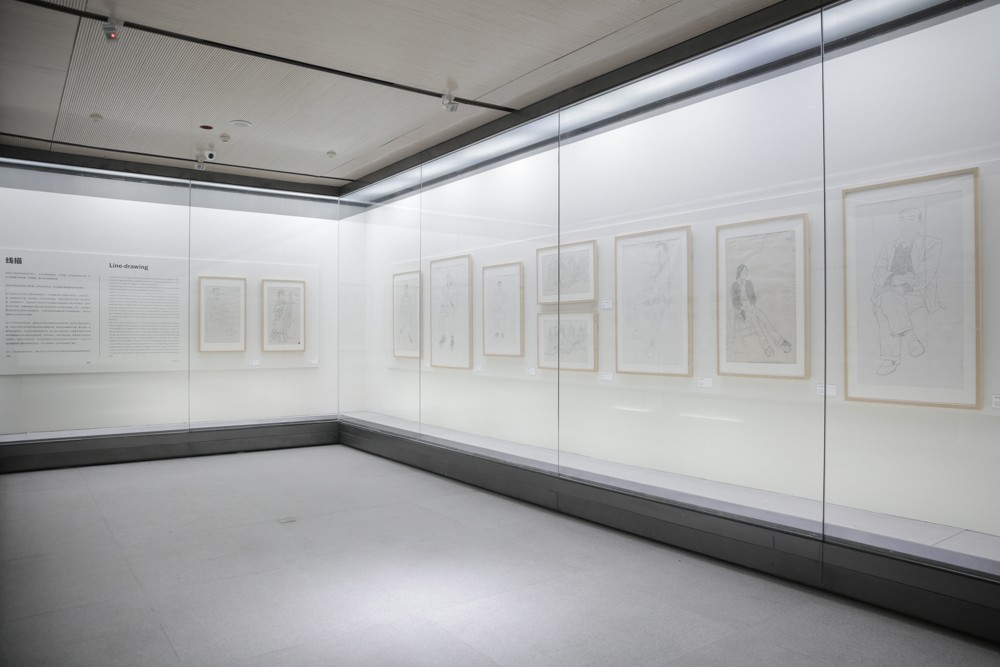
Exhibition View of “Extension”
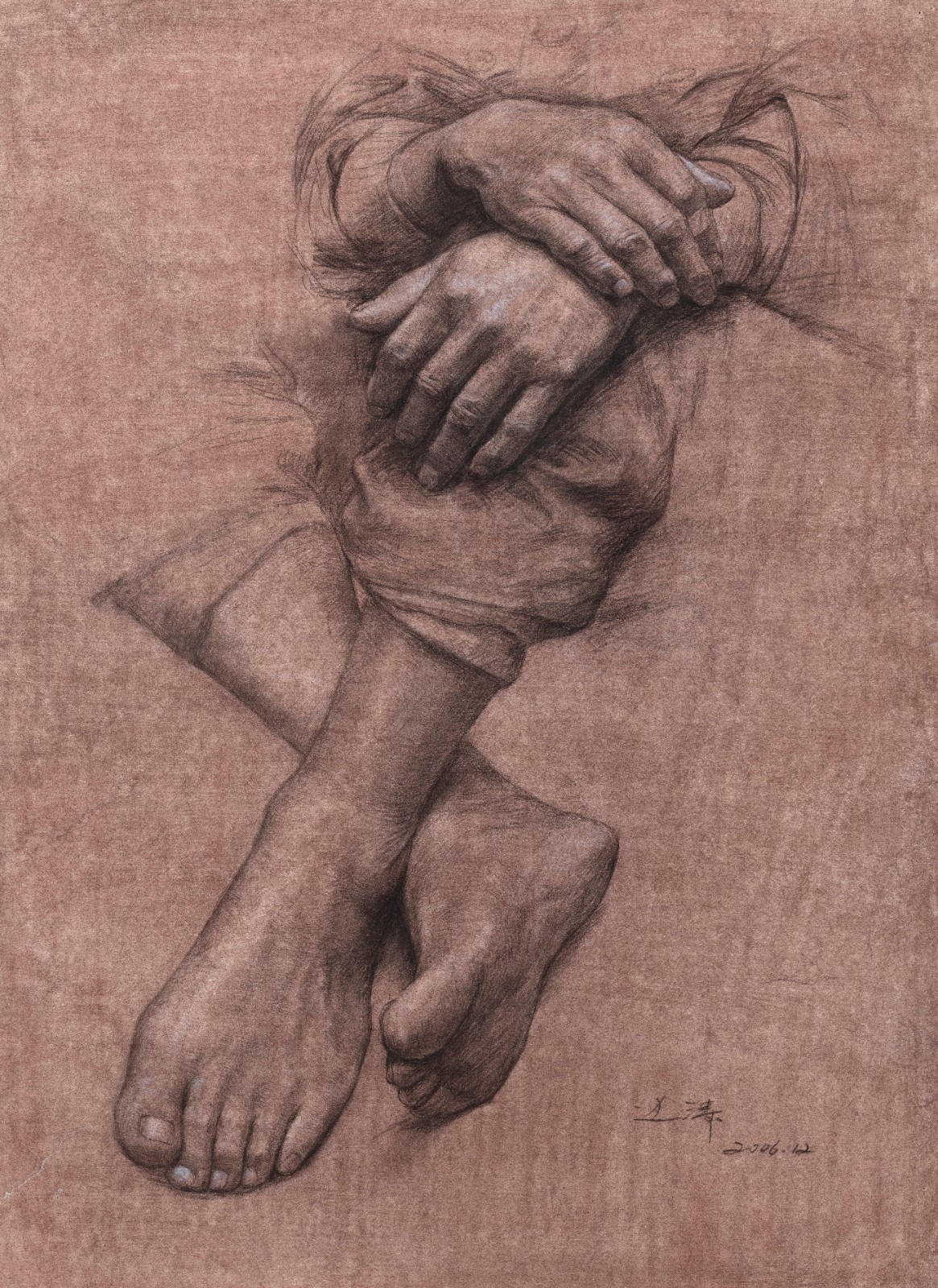
Bian Tao, “Sketches on Hands and Feet”, 59×44cm, Pencil on paper, 2007, Instructor: Wang Shaolun
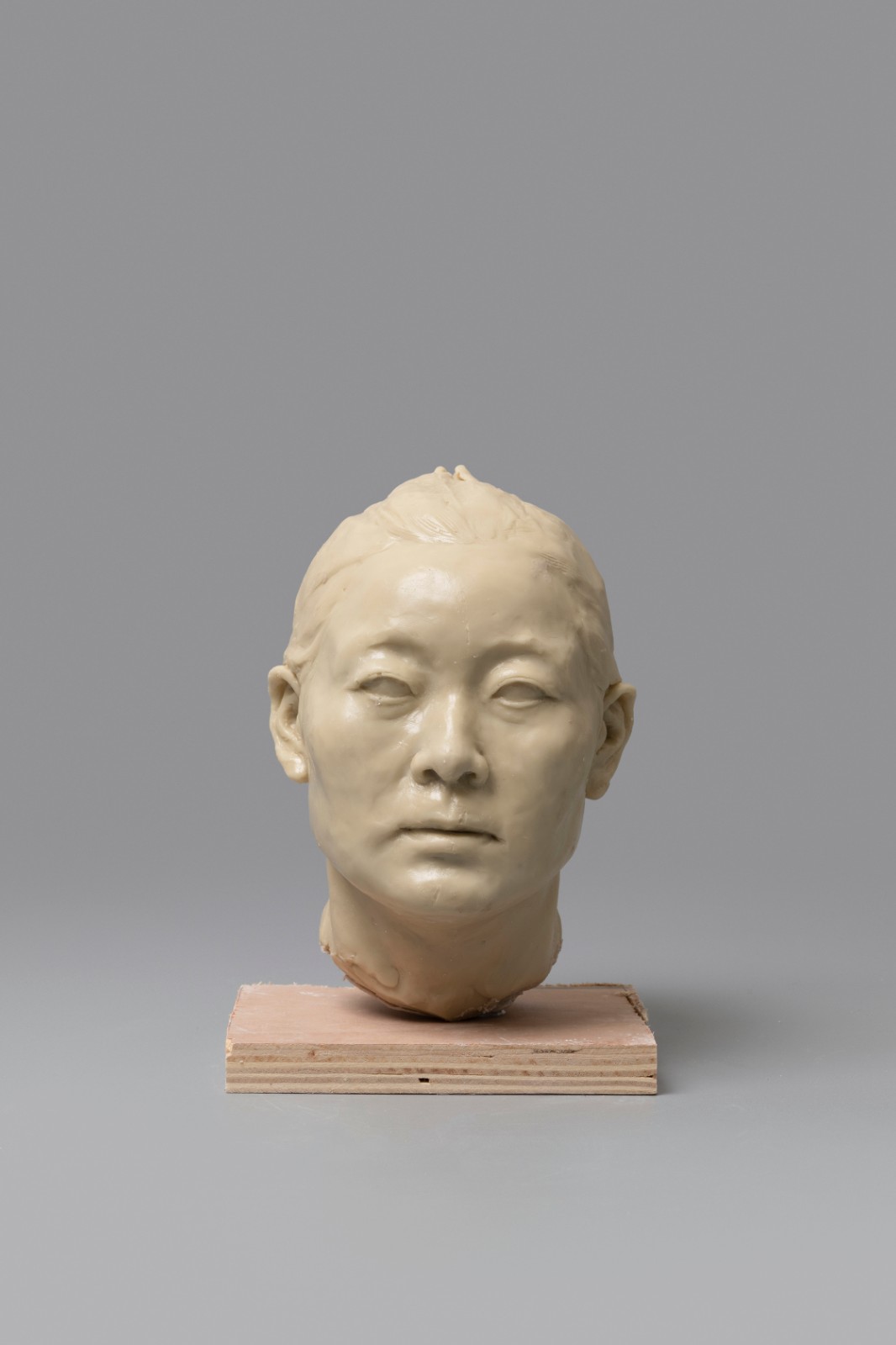
Diao Ange, “Female Head”, Fiber reinforced plastics, 2019, Instructor: Hei Xiaodong
Wen Guozhang, the first Dean of the Foundation Program at the School of Fine Art, once explained this educational principle as follows: “The essence of ‘wide foundation’ is to emphasize the guidance of comprehensive quality, and in essence it is to emphasize and implement the cultivation of ‘quality’.” The generalization of “quality” can be understood as the cultivation of students’ overall quality, which already includes the requirement for basic skills. [5] It is inherited from the “Educative School of Xu Beihong on Fine Arts”, which emphasizes rigorous modeling in the teaching system and emphasizes a solid foundation. This inheritance in the context and educational theory of the Central Academy of Fine Arts is comprehensively reflected in the “History” and “Virtue” sections. In the two chapters of the exhibition, it reviewed the Foundation Program which has gone through 20 years of foundation, 20 years of hard work, and 20 years of “Kung Fu”. The attitude of maintaining roots, inheriting learning, laying a foundation, and passing on morality and art in teaching practices were all reviewed in these two sections while the development process in bold exploration and repeated verification are also reflected on.
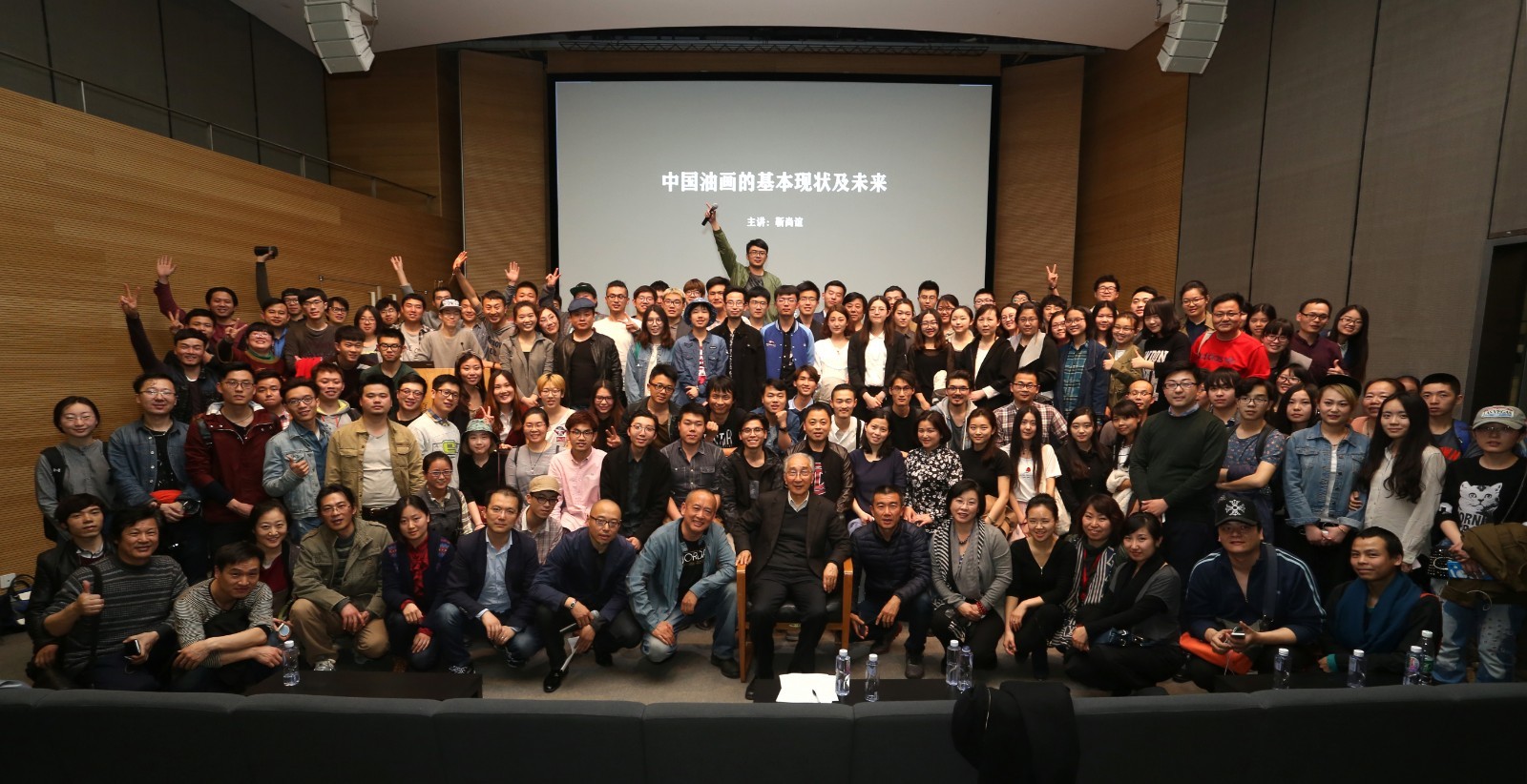
In April 2016, a series of lectures on “Traditions” hosted by the Foundation Program at the School of Fine Art, a group photo of teachers, students and Mr. Jin Shangyi.
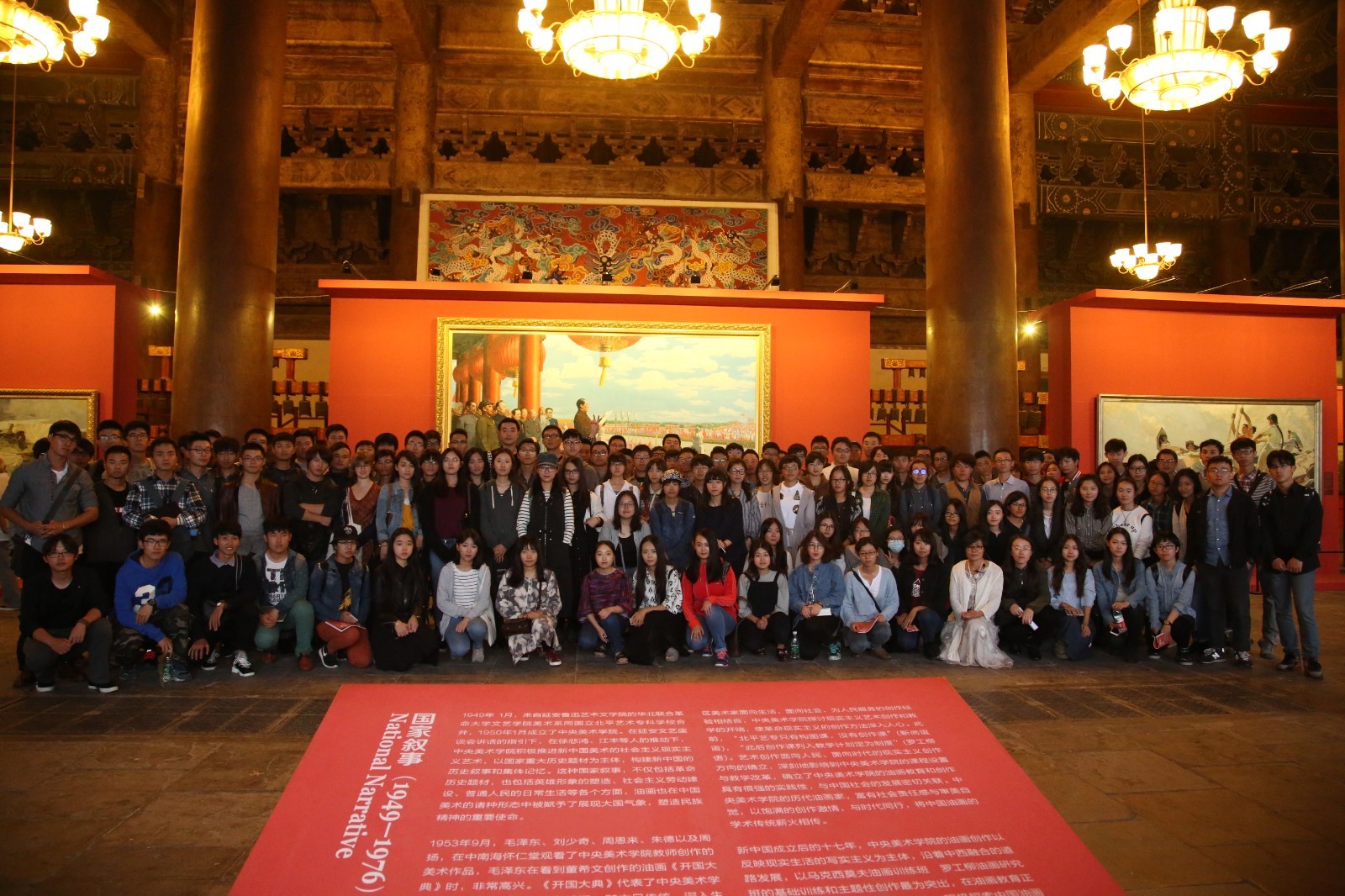
In September 2015, the first lesson in enrollment education for new students, teachers and students visited the “The Temperature of History” at the Ancestral Temple Art Gallery.
Debates on the principles and methodology of Chinese modern art education has never stopped since the beginning of 20th century. This dispute has evolved from “learning from Chinese traditions” and “learning from the western ways” to the current formal evolution into the question on whether the foundation education of fine art is important for the creation or even “how to educate an artist” and so on, which are somewhat sharp but it is difficult to avoid.
This exhibition provides an opportunity to summarize, review and look forward to the teaching of the Foundation Program for 20 years, so that the public who love art and those who care about the development of art education can research the origin and development of the Foundation Program at the School of Fine Art, CAFA which was formally established in 2001, and further to examine its teaching achievements in inheritance and development, tradition and innovation over two decades. It is also an opportunity to understand the basic courses of fine art in colleges and universities. Through such a retrospective, it is intended to offer inspiration for a path that belongs to Chinese art academies in the field of fundamental art teaching.
Text by Mengxi, edited and translated by Sue/CAFA ART INFO
Photos of Exhibition View Taken by Hu Sichen/CAFA ART INFO
Image Courtesy of the Organizer.
Notes:
[1] In April 1996, the Foundation Program at the Department of Oil Painting, “Original Reasons that the Foundation Program at the Department of Oil Painting was Founded” (Revised and Finalized)"
[2] “The teaching tasks, needs and goals of the Foundation Program are to cultivate qualified talent with solid basic skills, emphasizing cultural accomplishment, outstanding morality, and comprehensive qualities, so as to prepare for further studies in the studios at Department of Oil Painting.” Quoted from “Syllabus of Foundation Program at the Department of Oil Painting (Draft for Soliciting Comments)”
[3] “Mr. Jin strongly advocated the establishment of the Foundation Program. I think his idea was not to stop at the establishment of the Program. He wanted to make changes in the entire teaching system, establishing a studio system, a tutorial system...the studio system which was in line with art teaching. It can maximize the energy of professors and benefit academic development.” Quoted from “Wen Guozhang: Talking about the Foundation Program”, Interviewed by Zhu Li, http://www.cafa.com. cn/cn/opinions/interviews/details/8330454
[4] “The collective forces that contribute to this system are the ‘Xu Beihong’s School of Art Education’, ‘Yan’an School’, ‘Soviet School’, as well as other famous teachers who coexisted with it in this convergent pattern. The correlation and fusion between them are far greater than the dissimilarity and dislike between them. Gradually, they are jointly internalized into the education system that has affected the whole art education system’. Cao Qinghui, “On Xu Beihong’s School of Art Education”, Chinese Calligraphy and Painting, 2013(Vol 06), p116-123.
[5] “Wen Guozhang: Talking about the Foundation Program”, Interviewed by Zhu Li, http://www.cafa.com. cn/cn/opinions/interviews/details/8330454




























